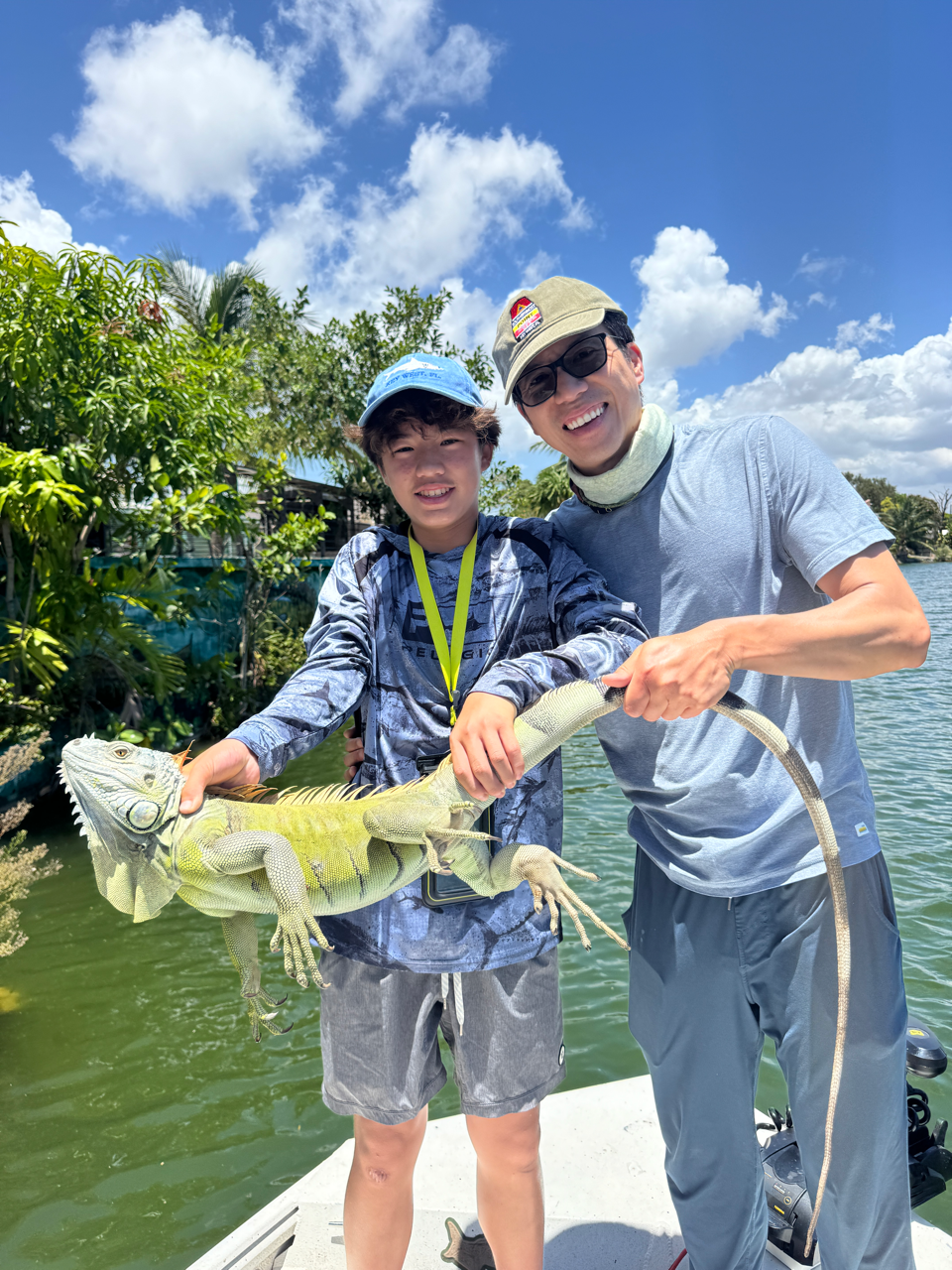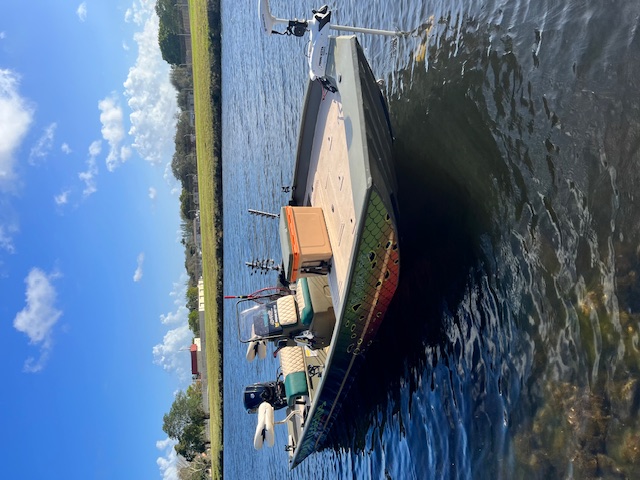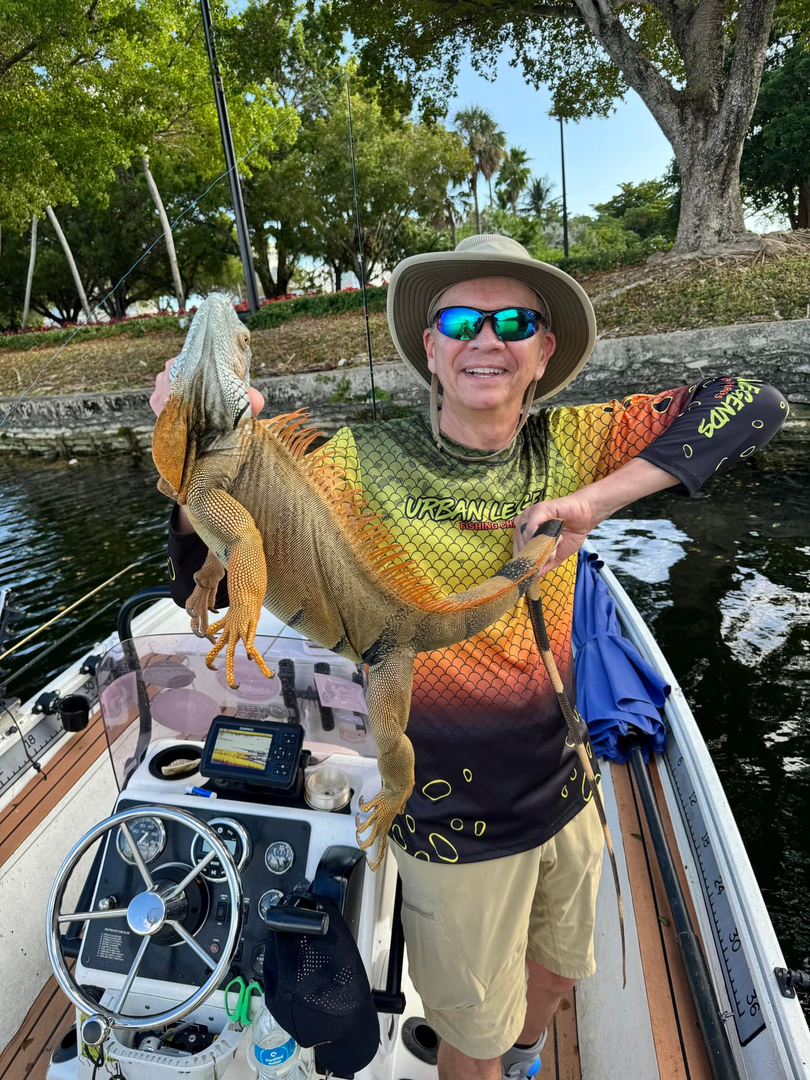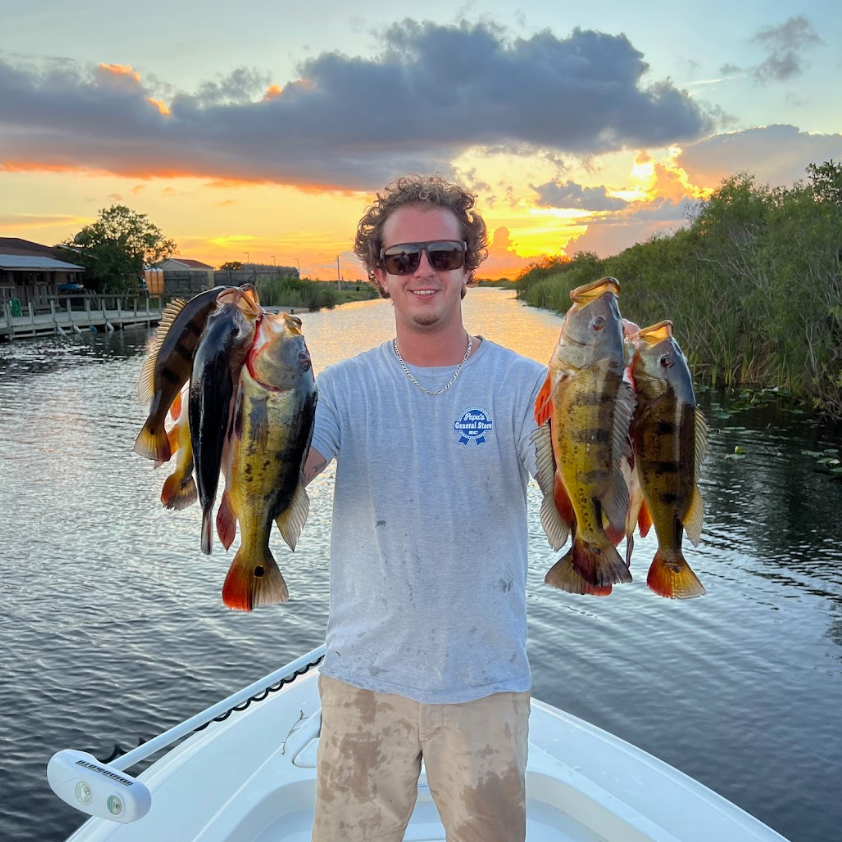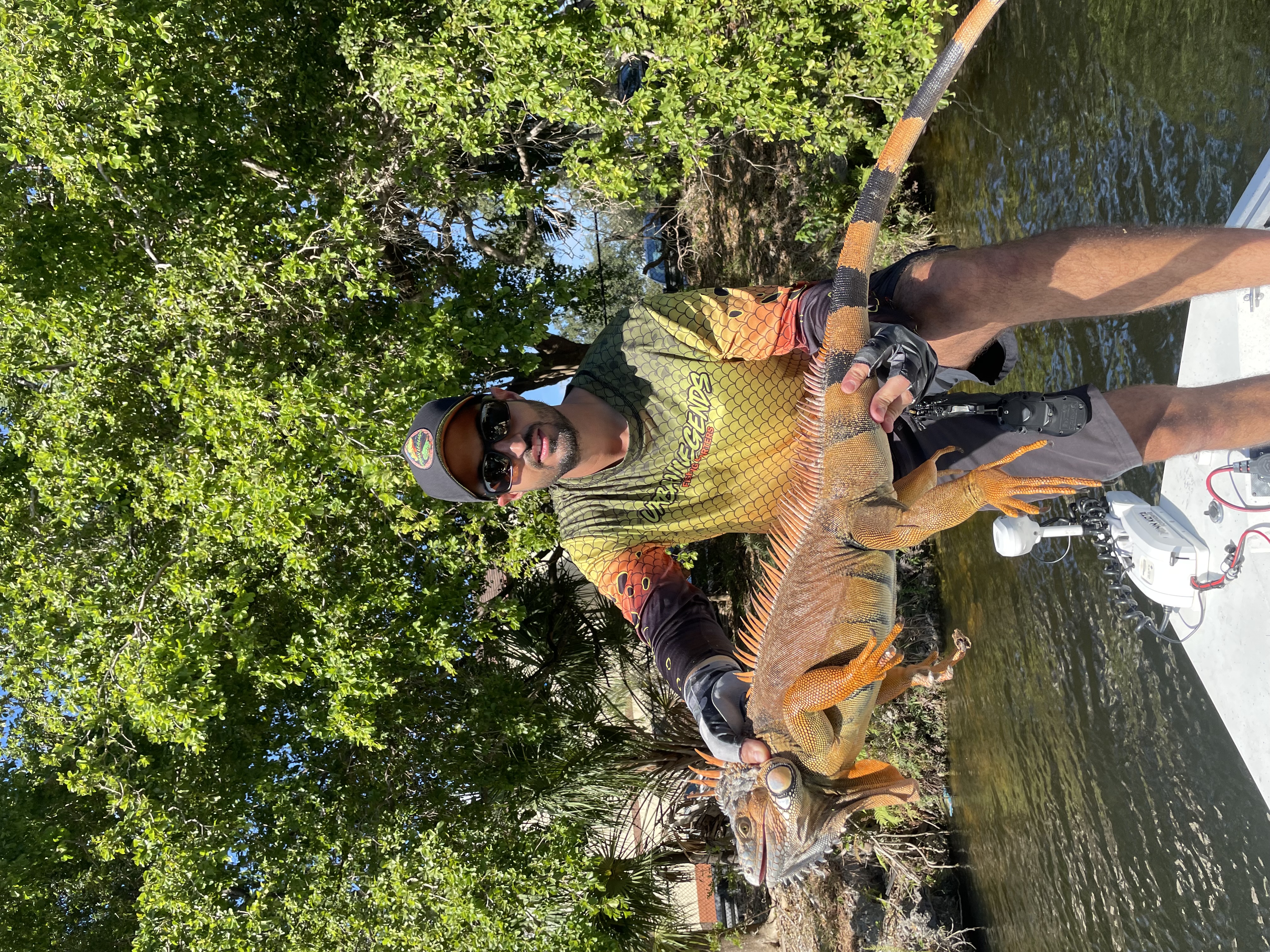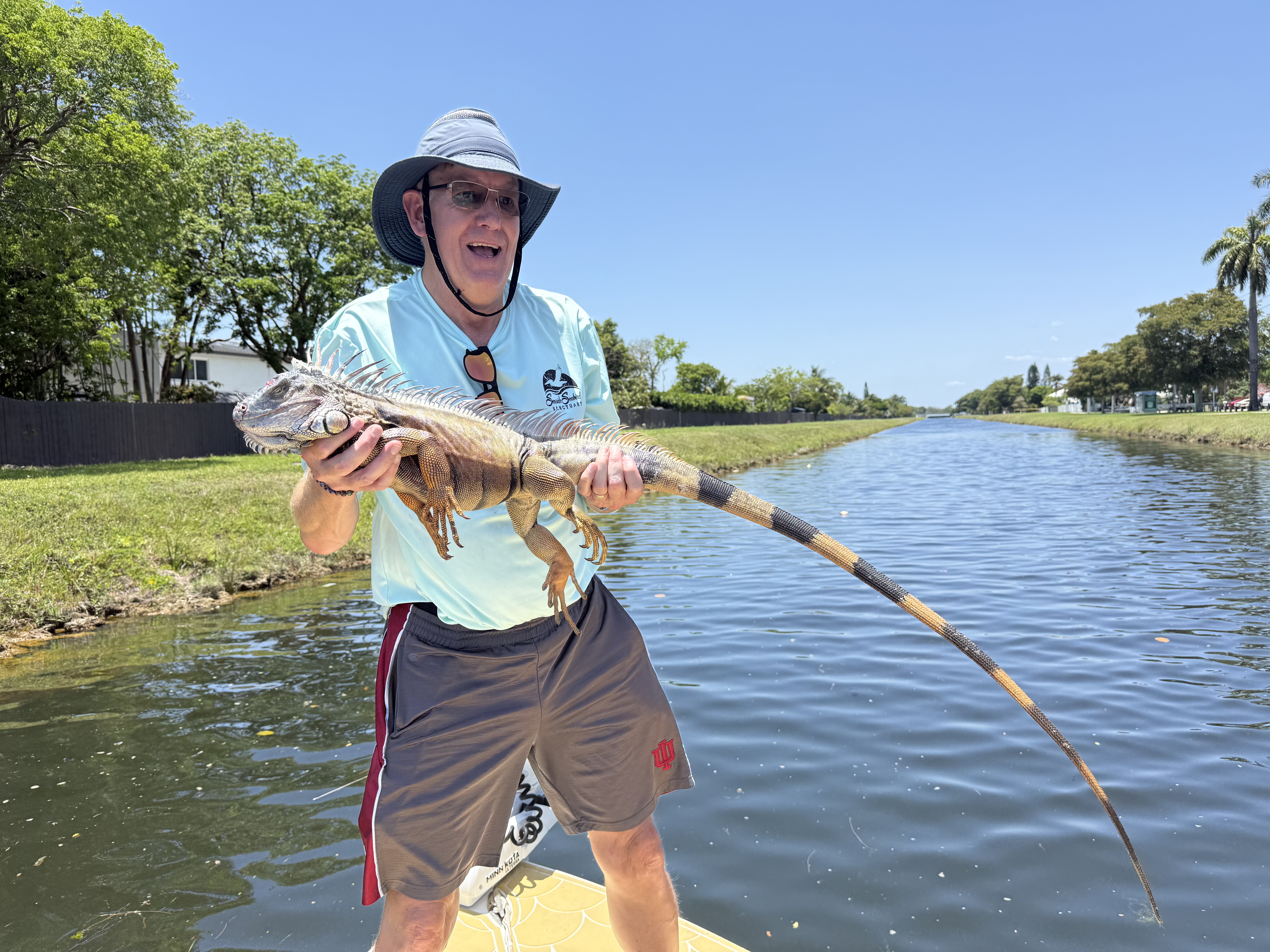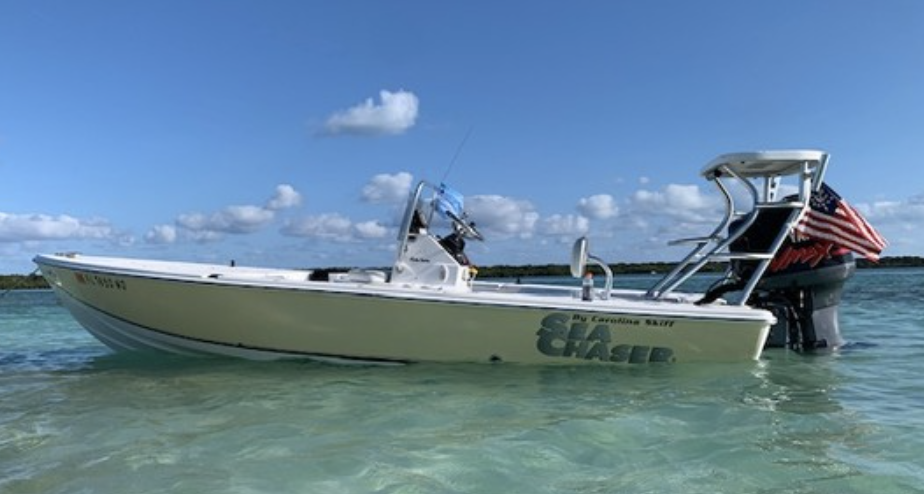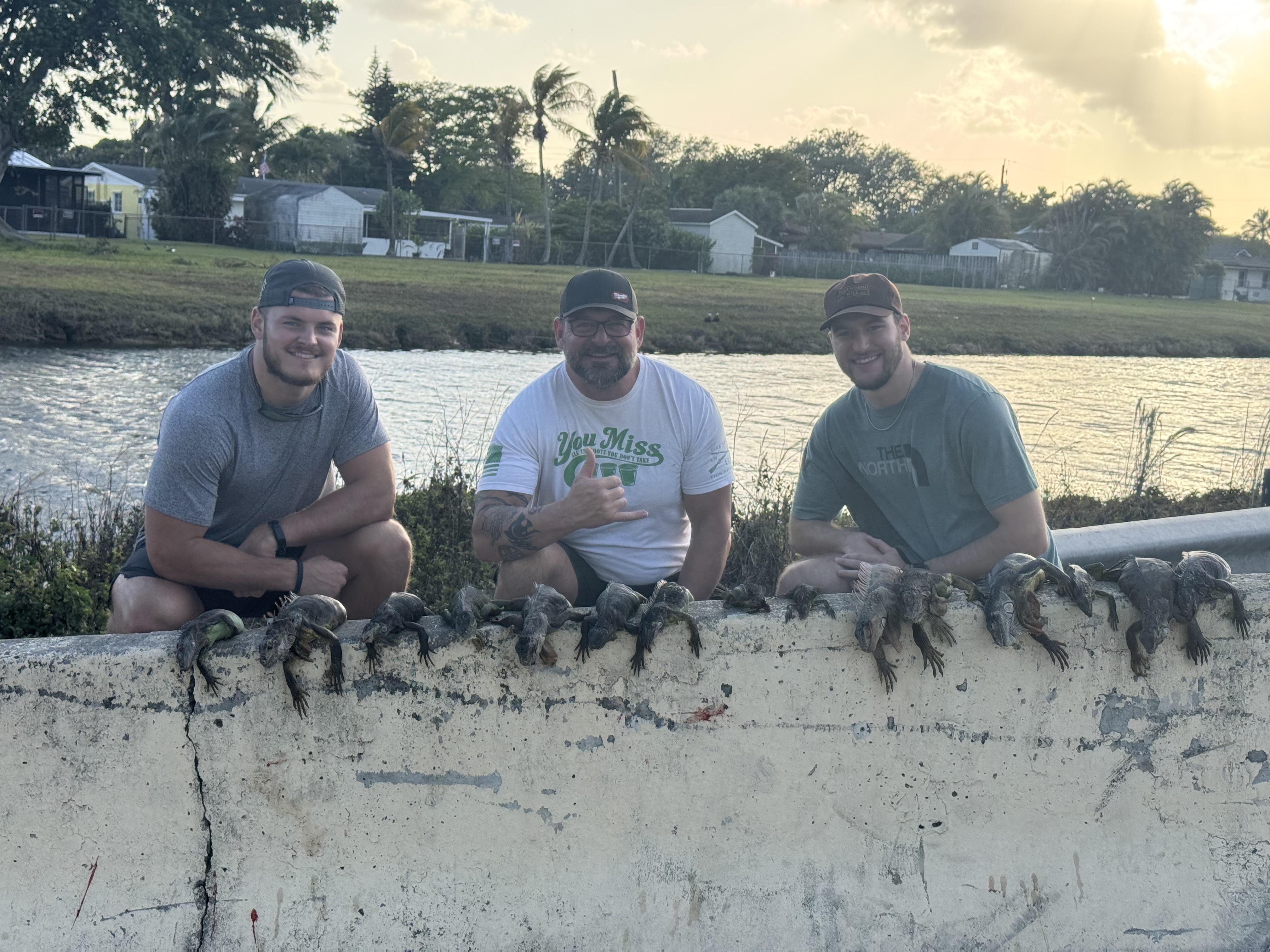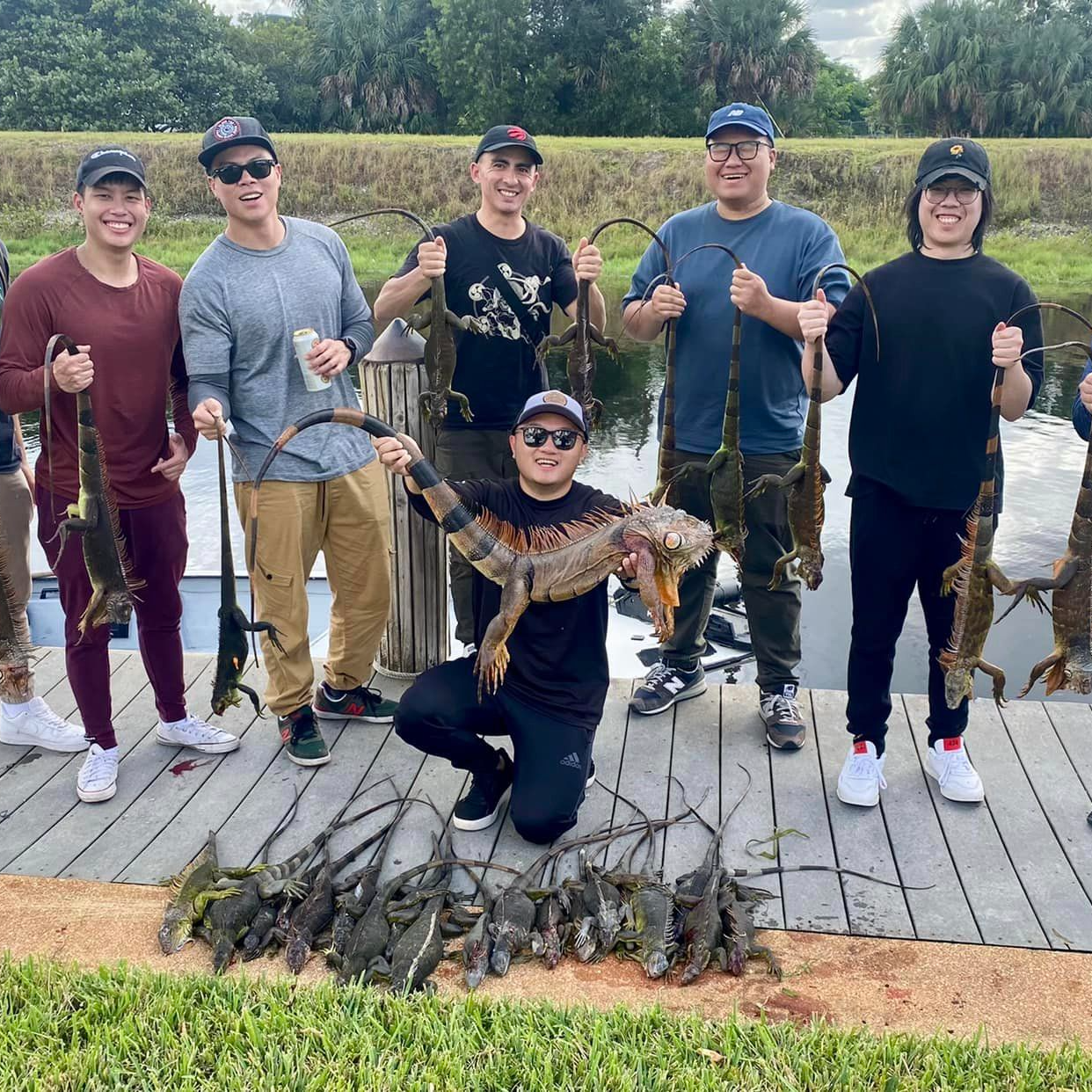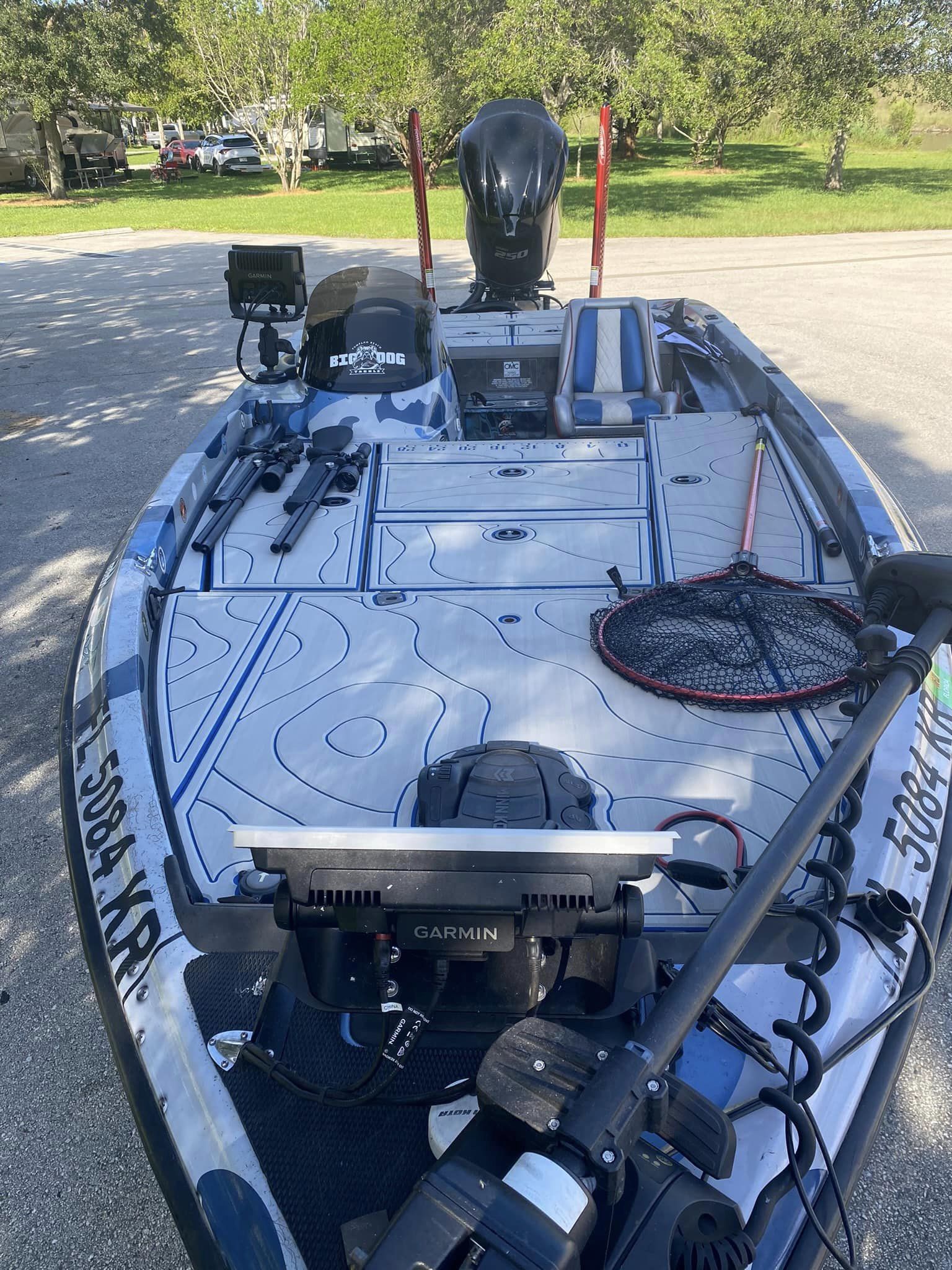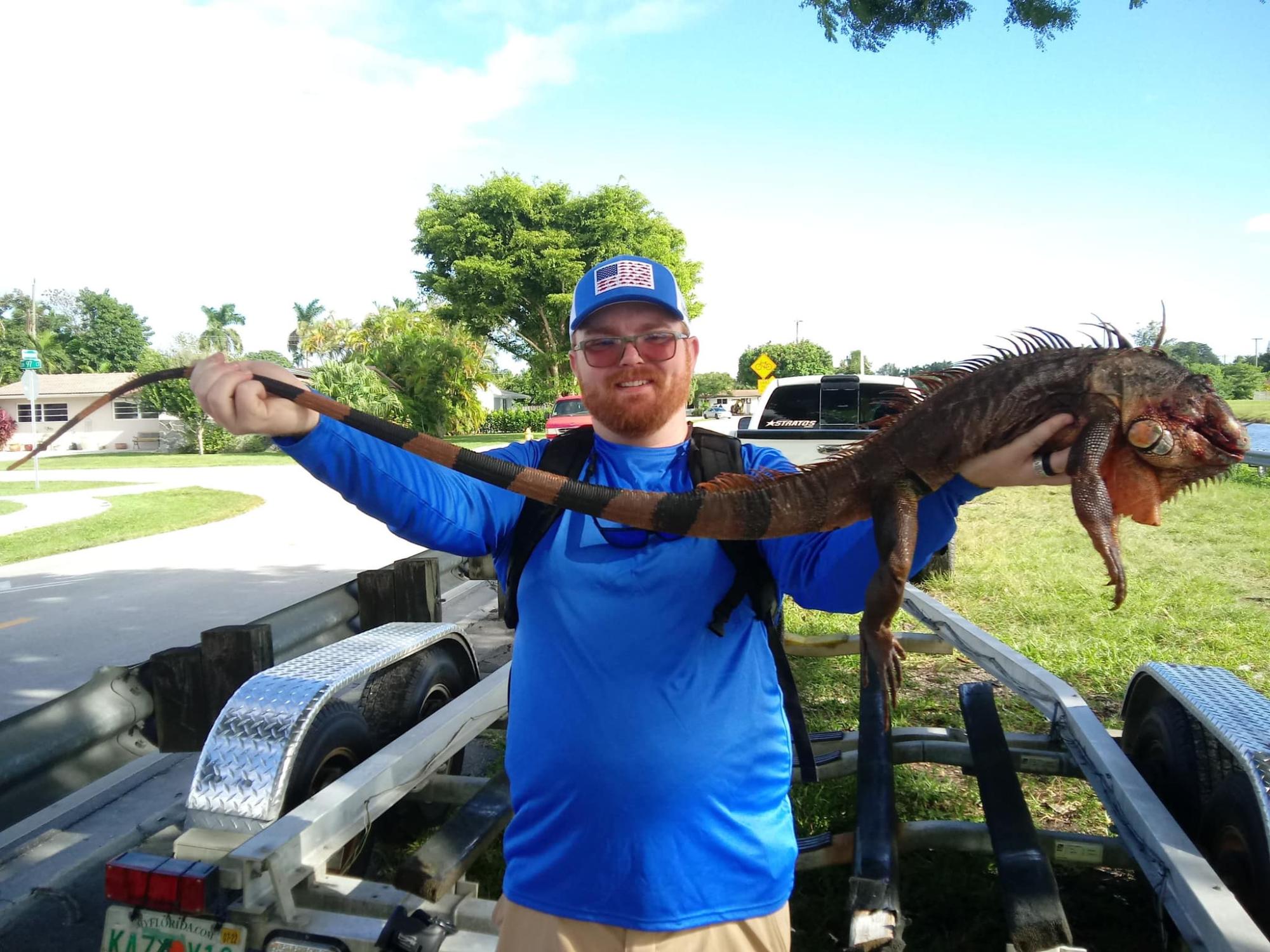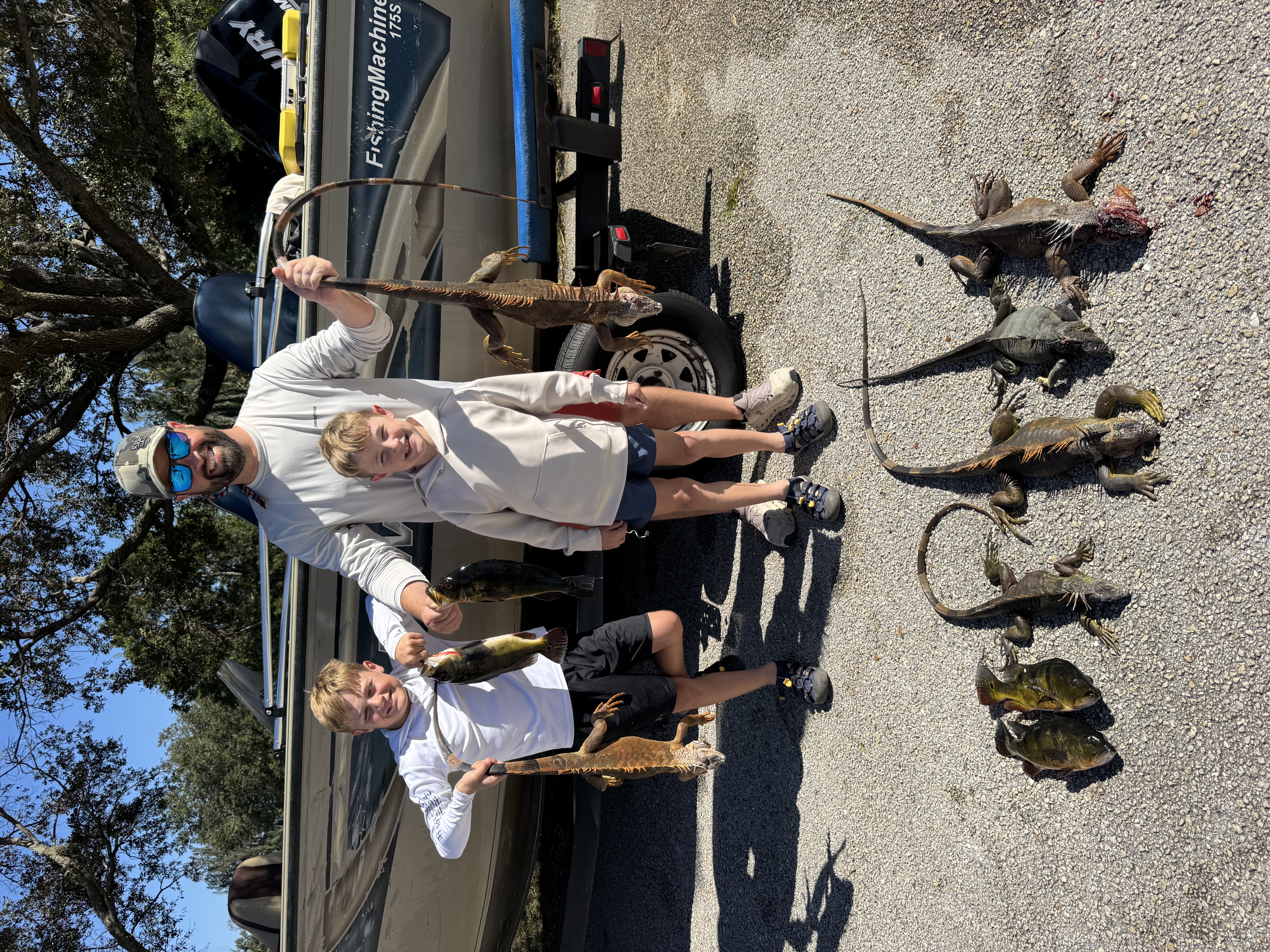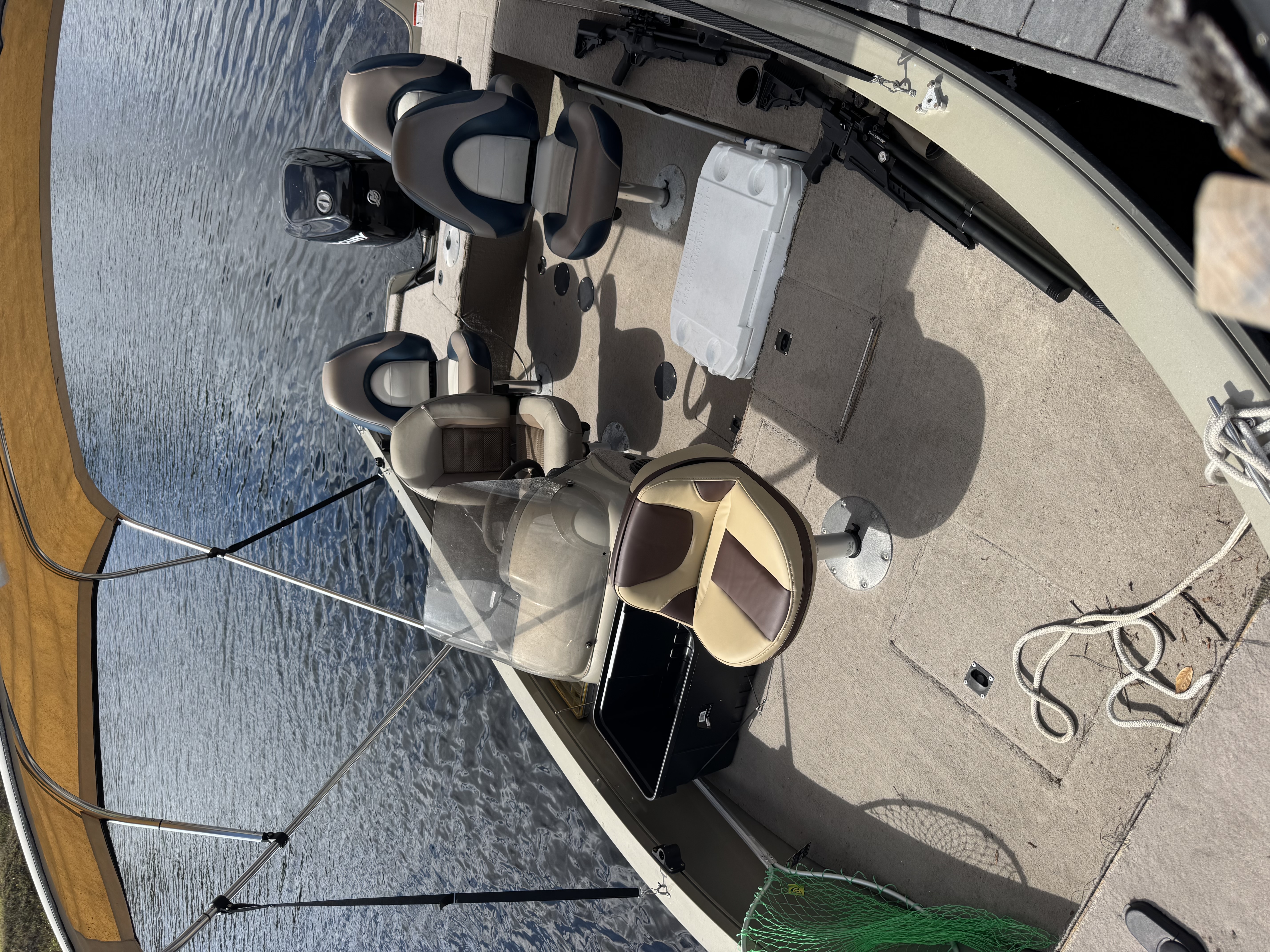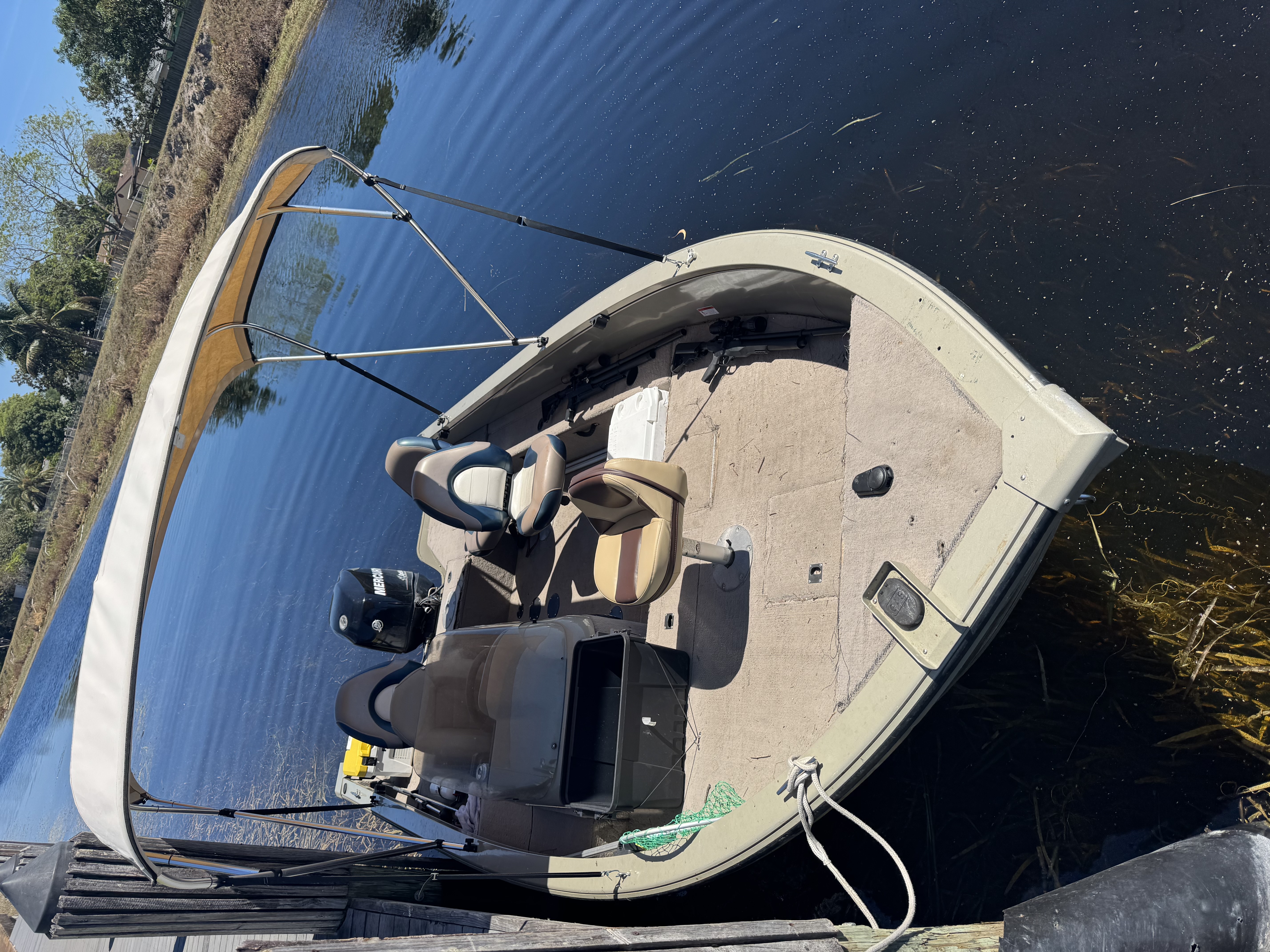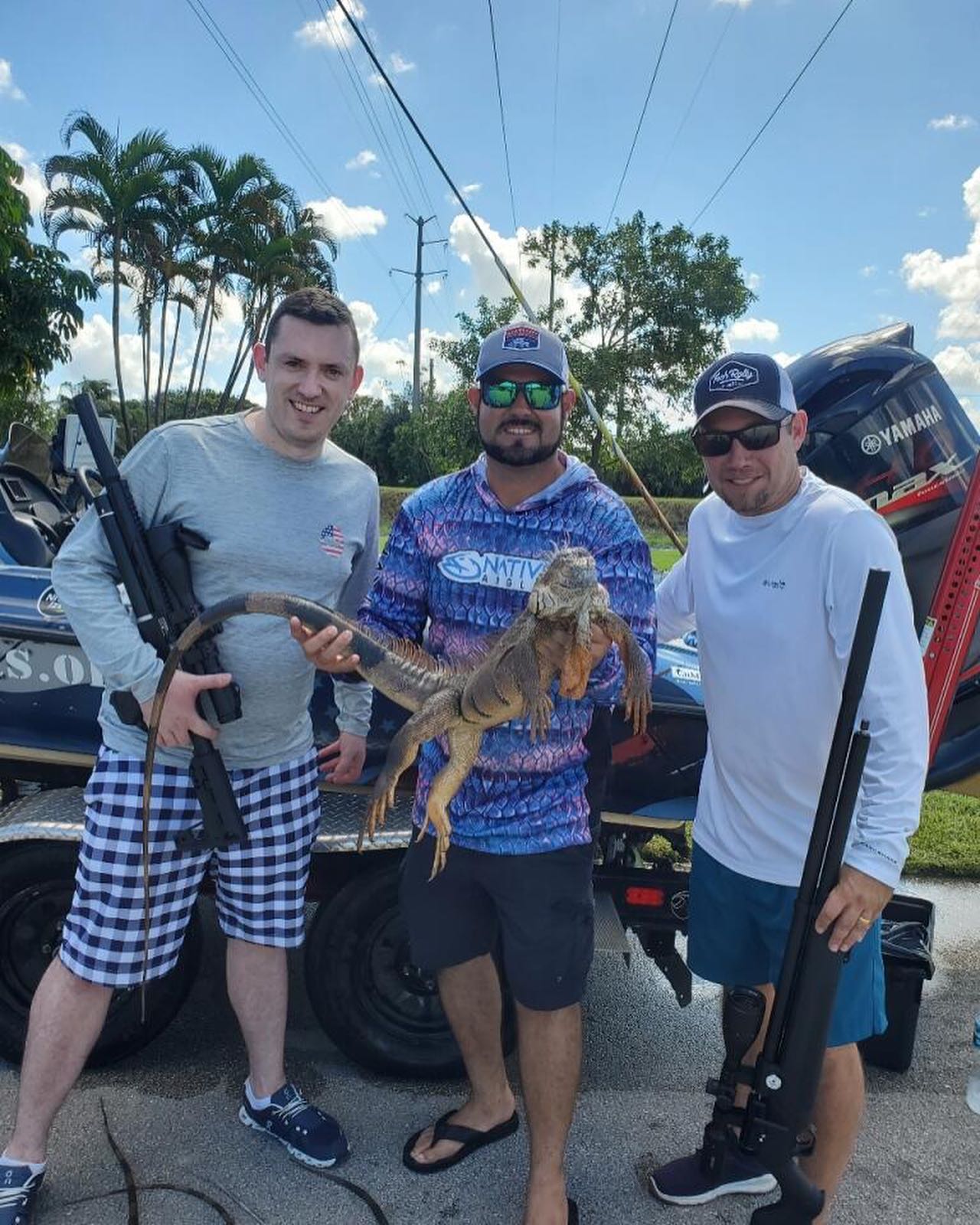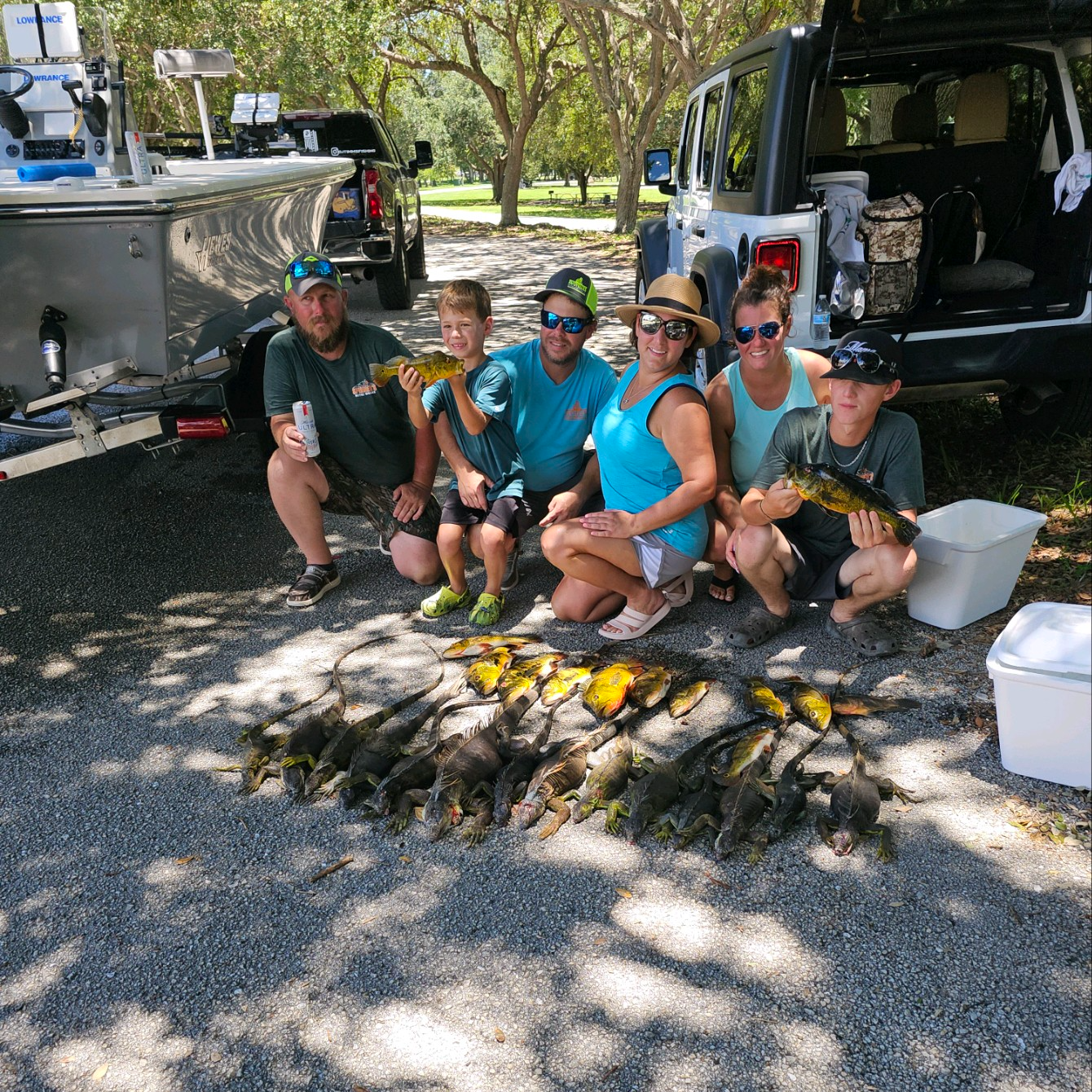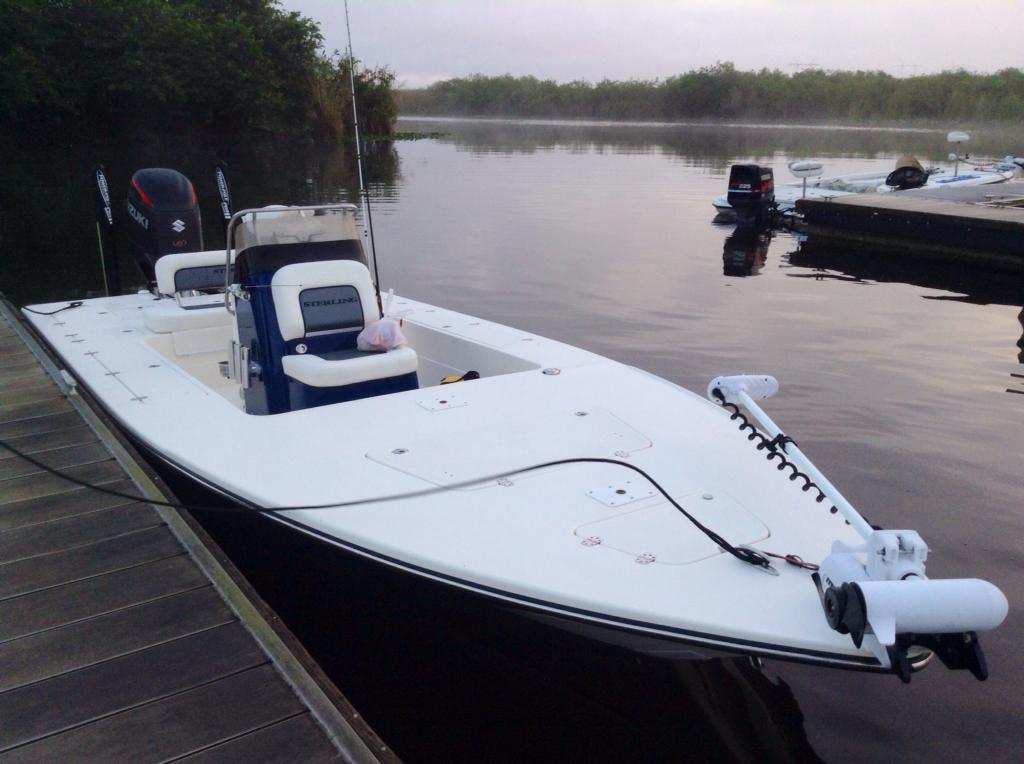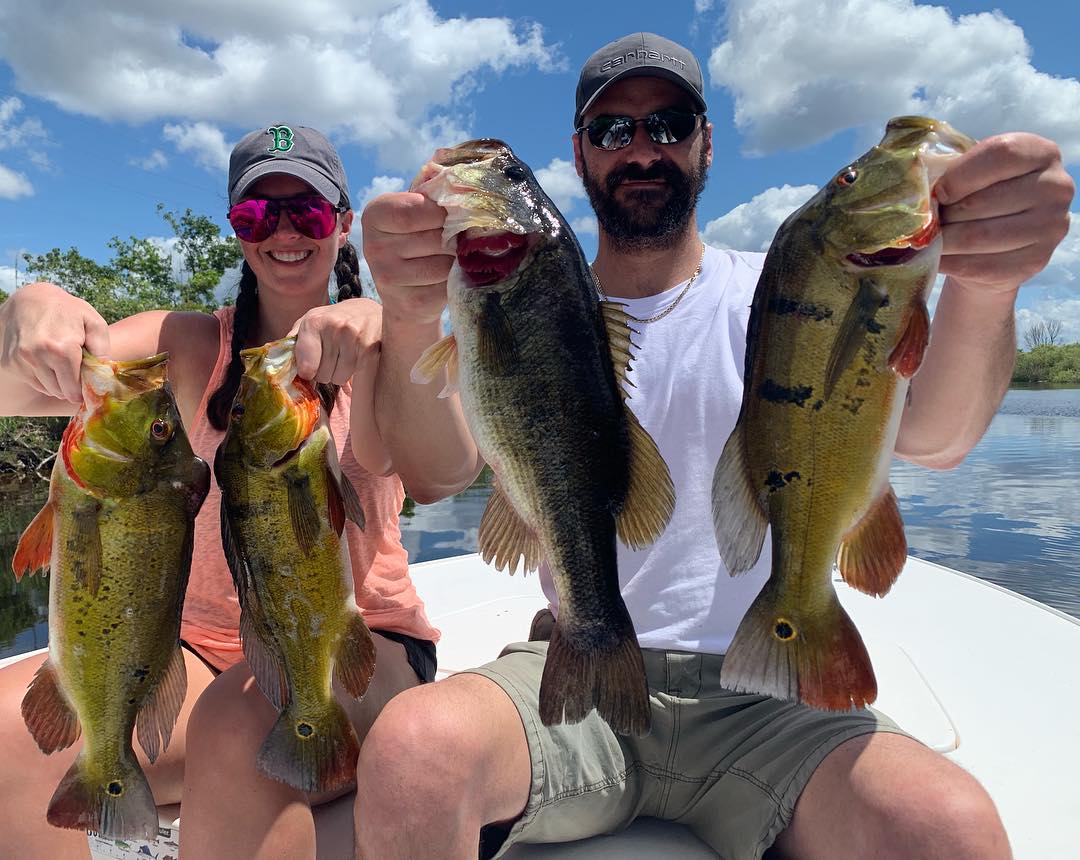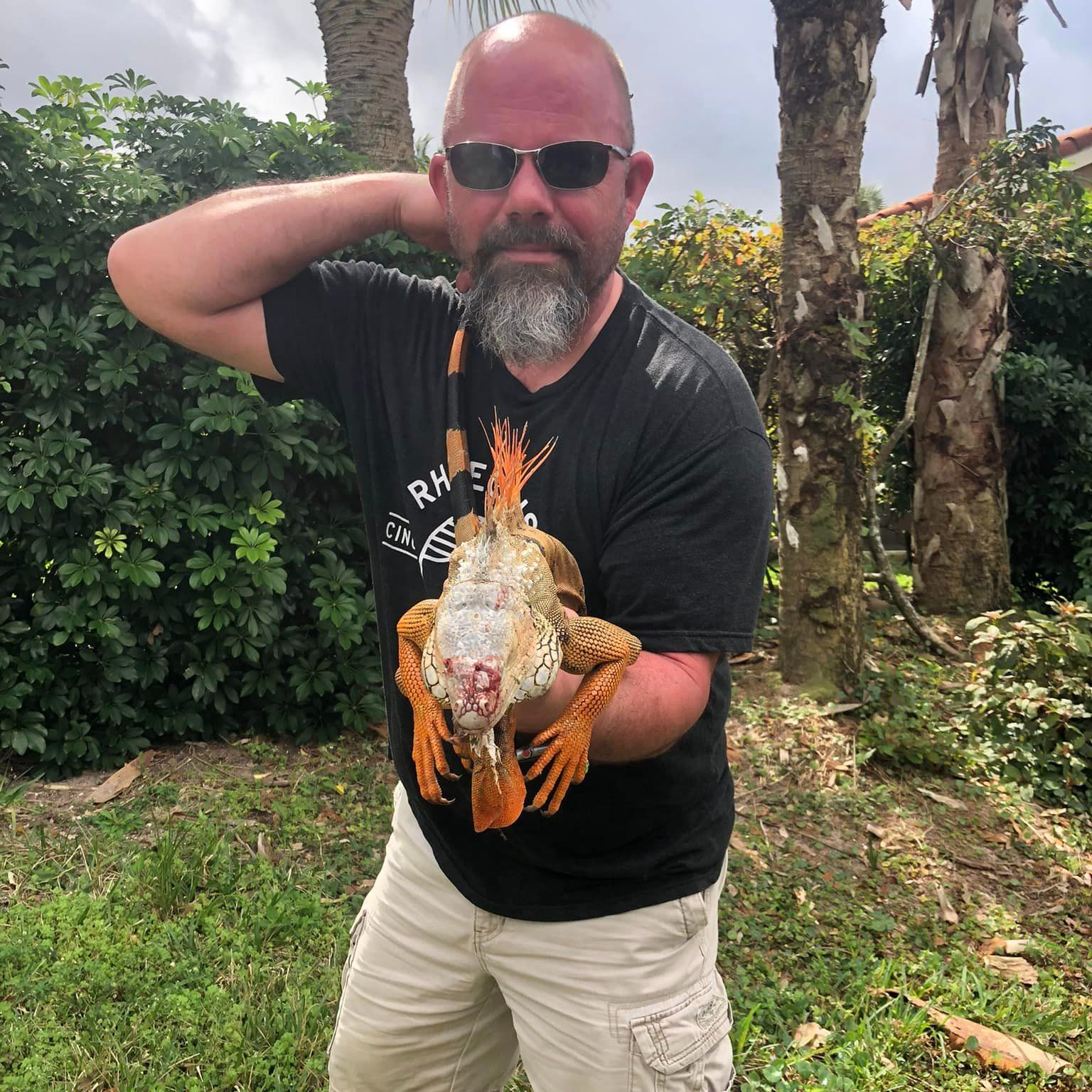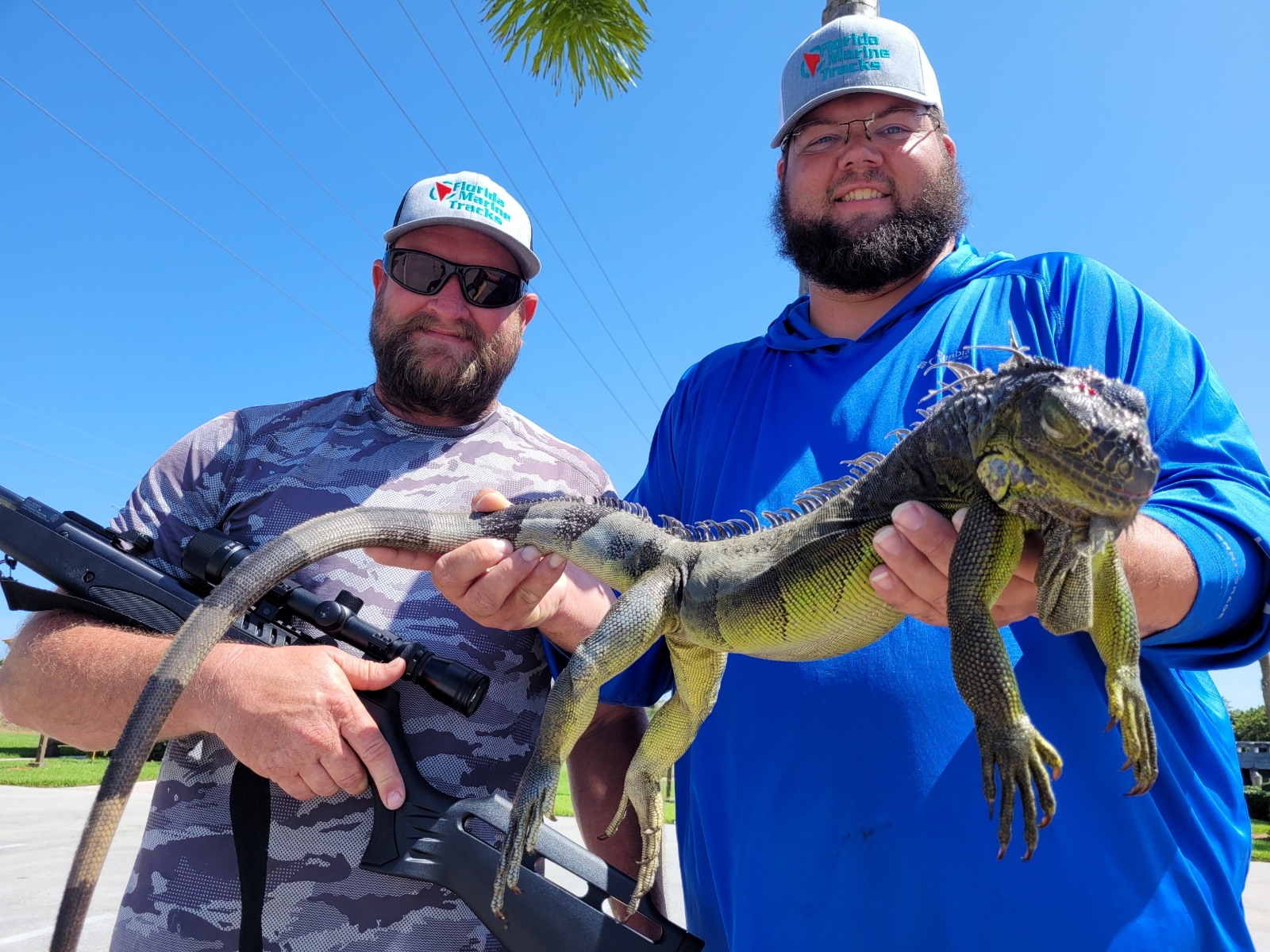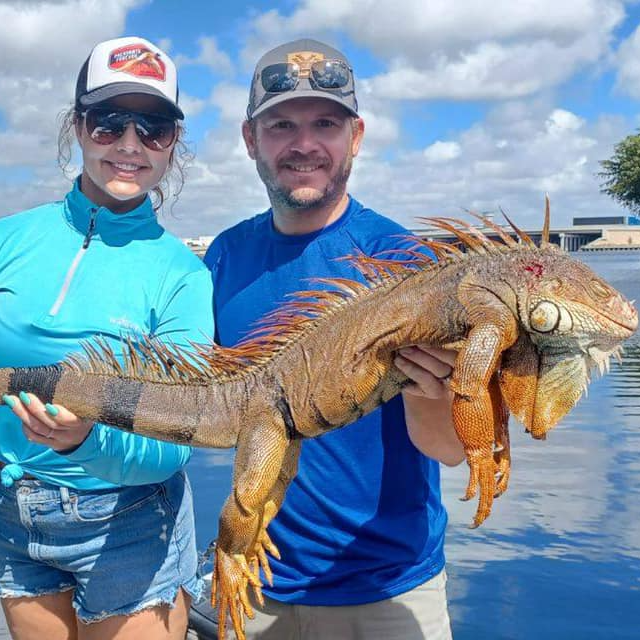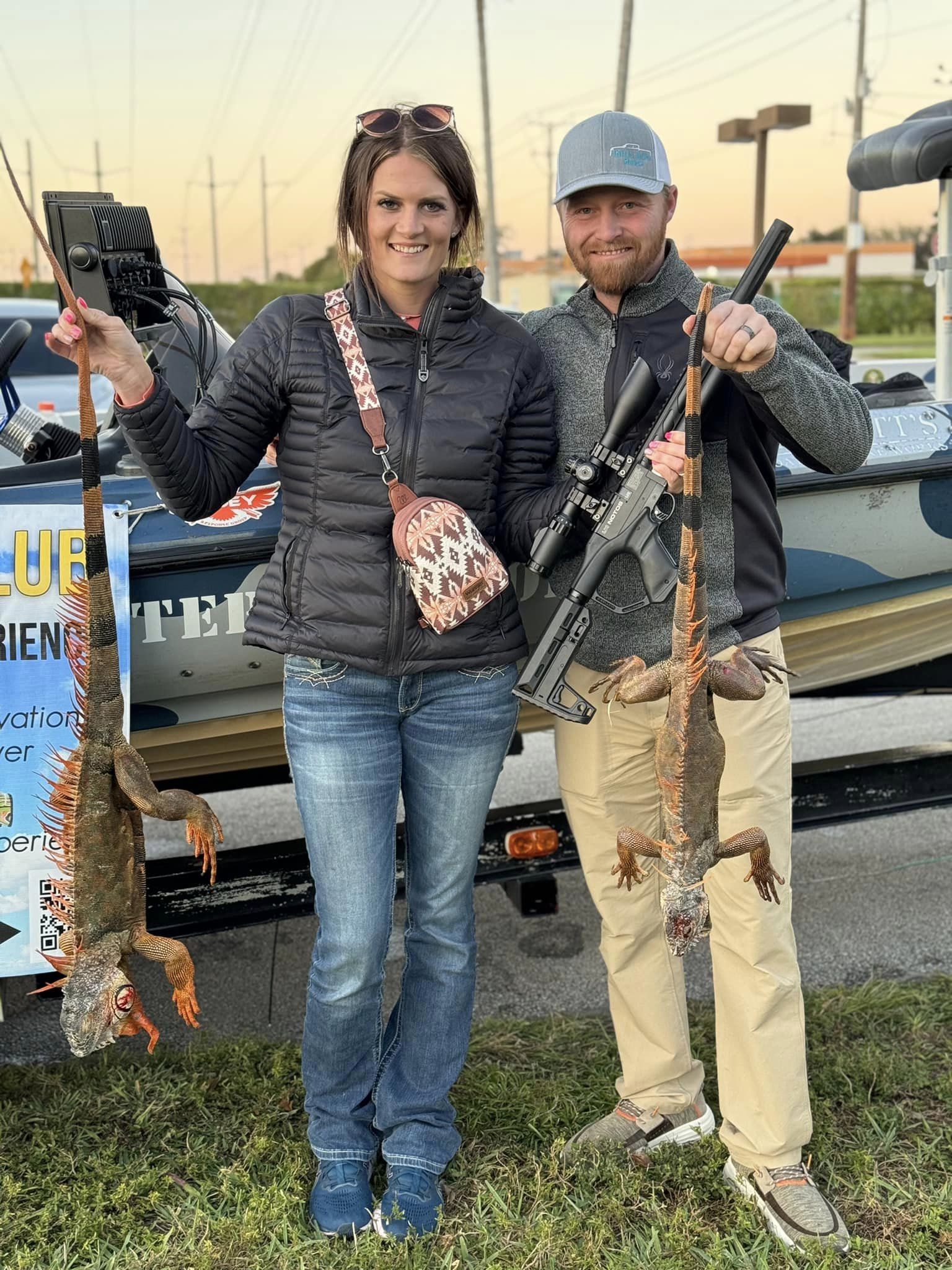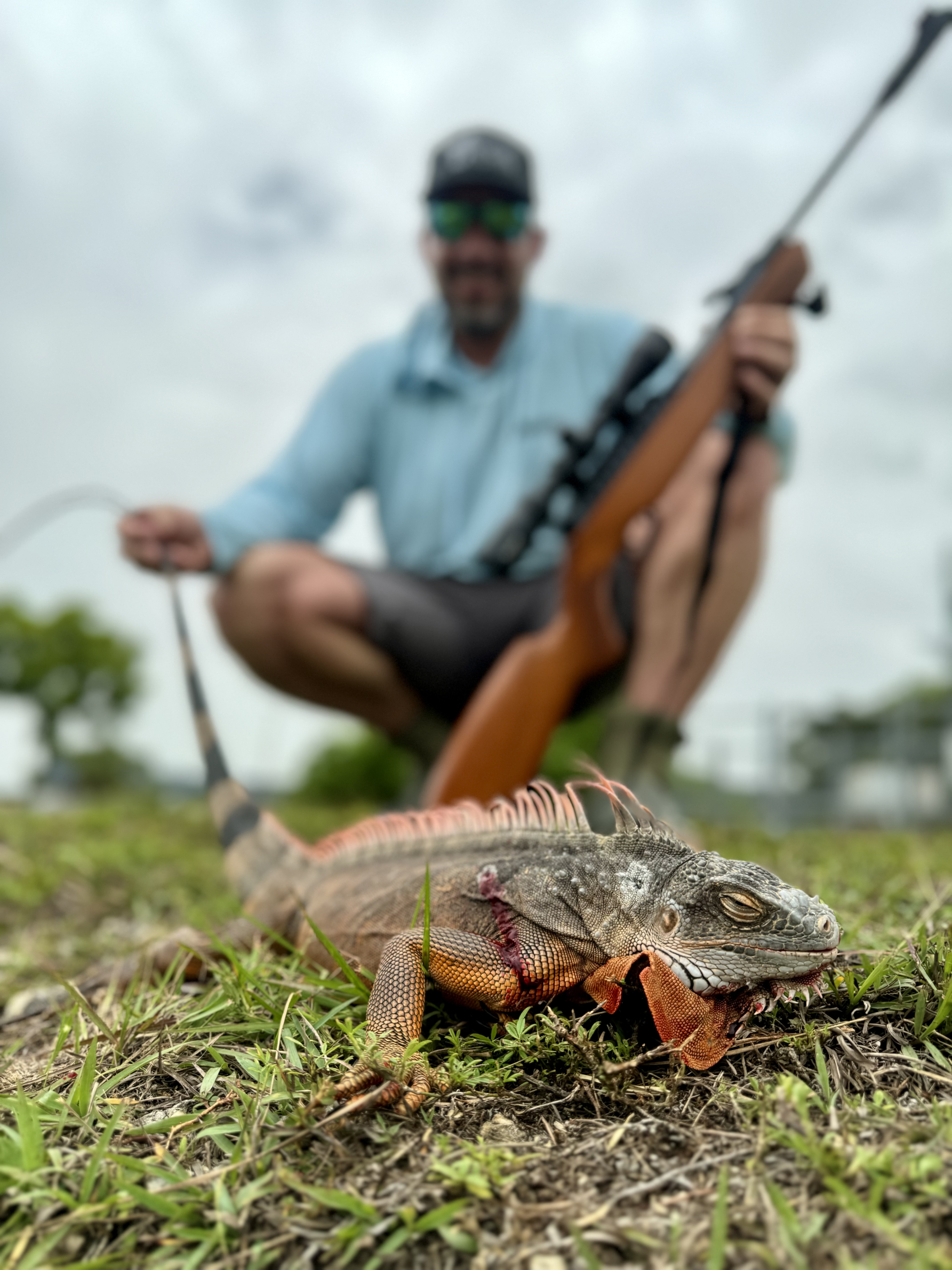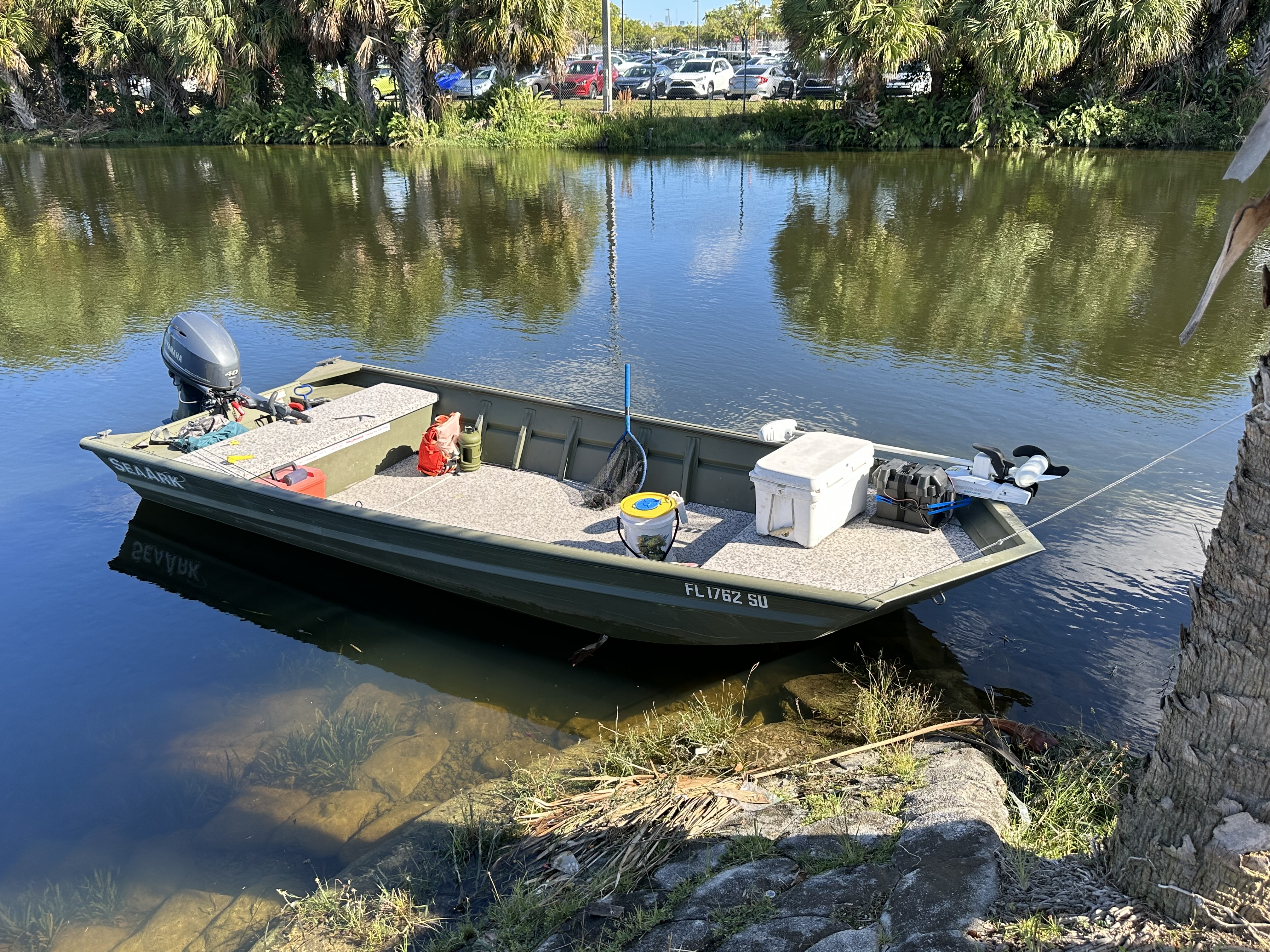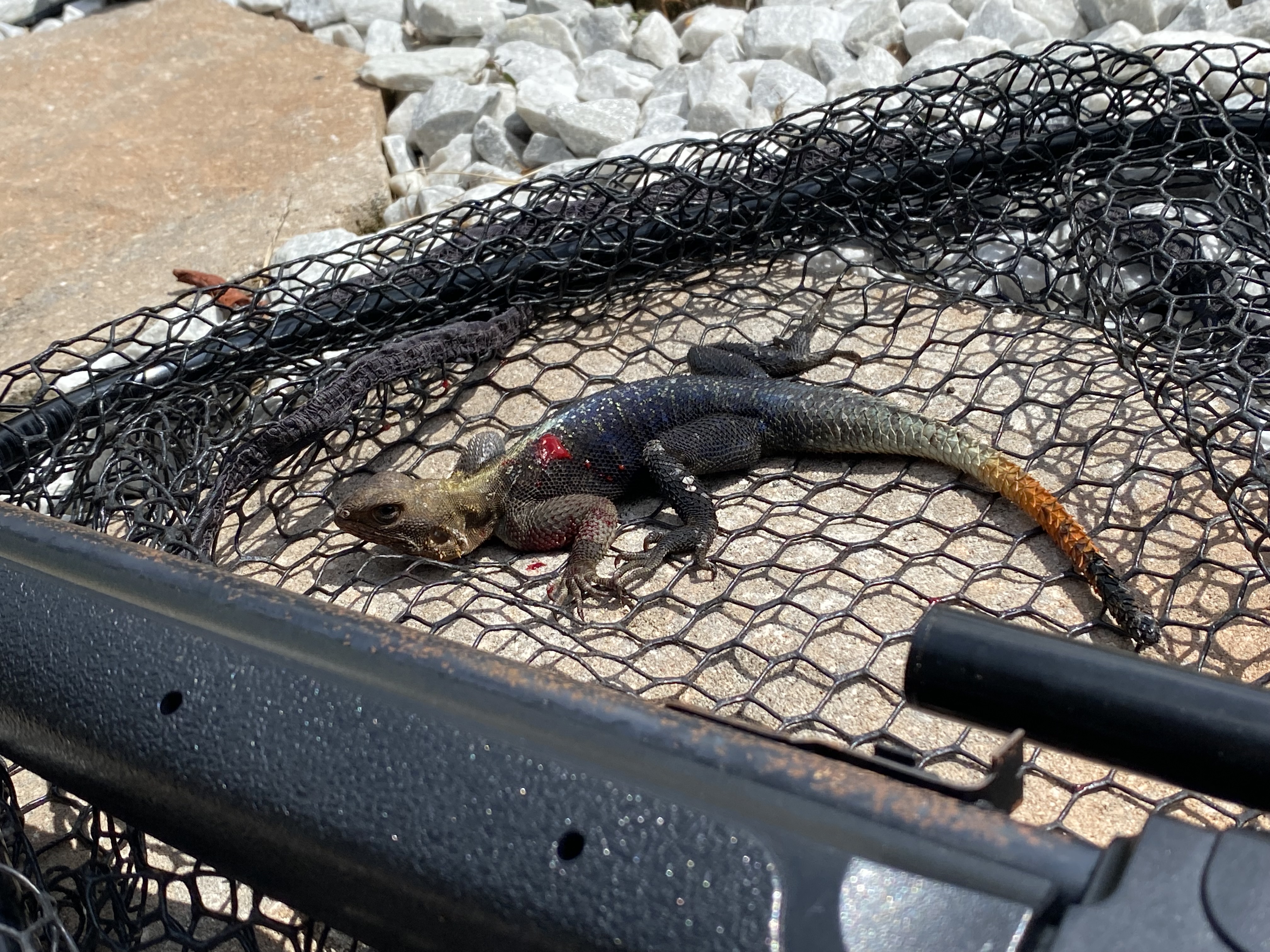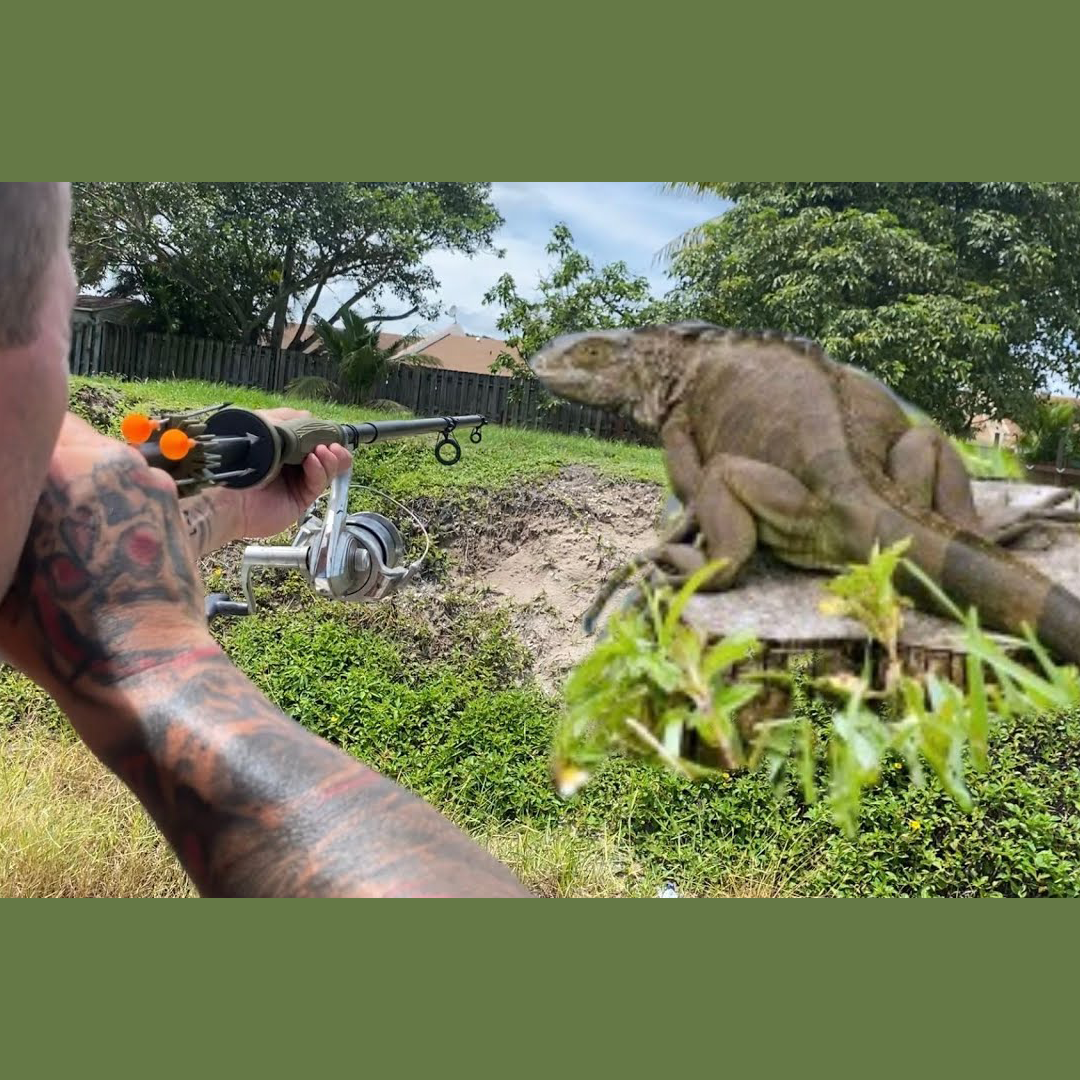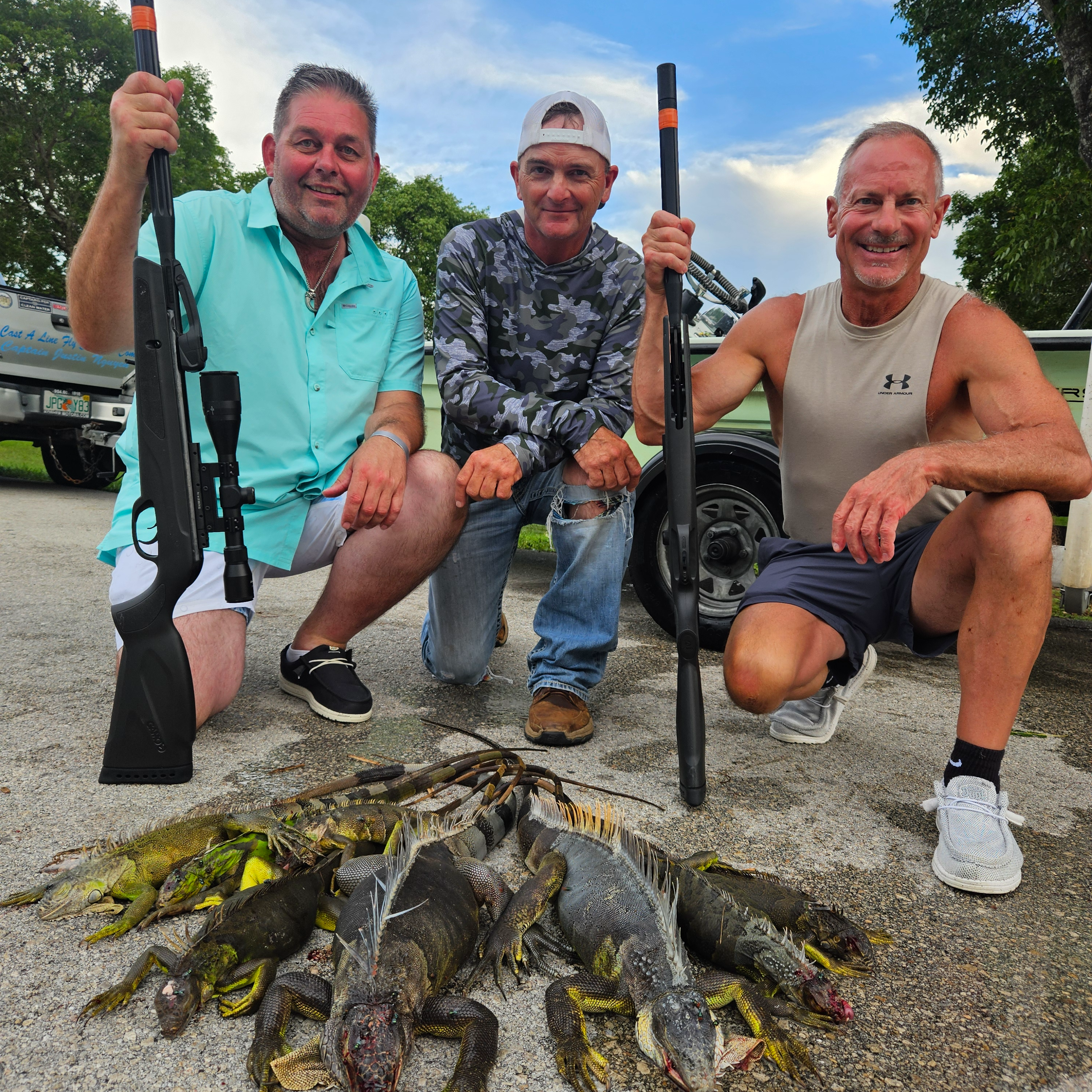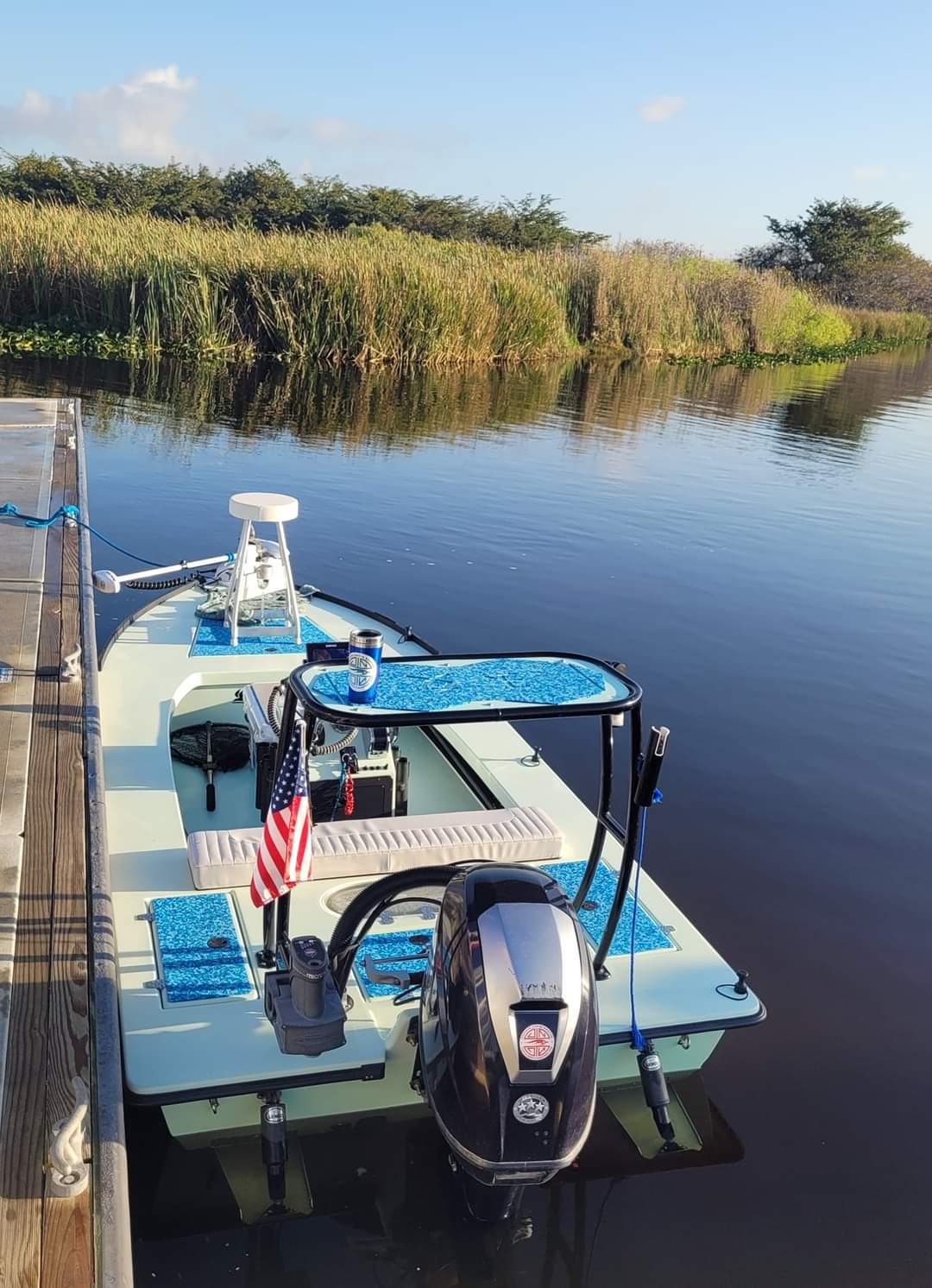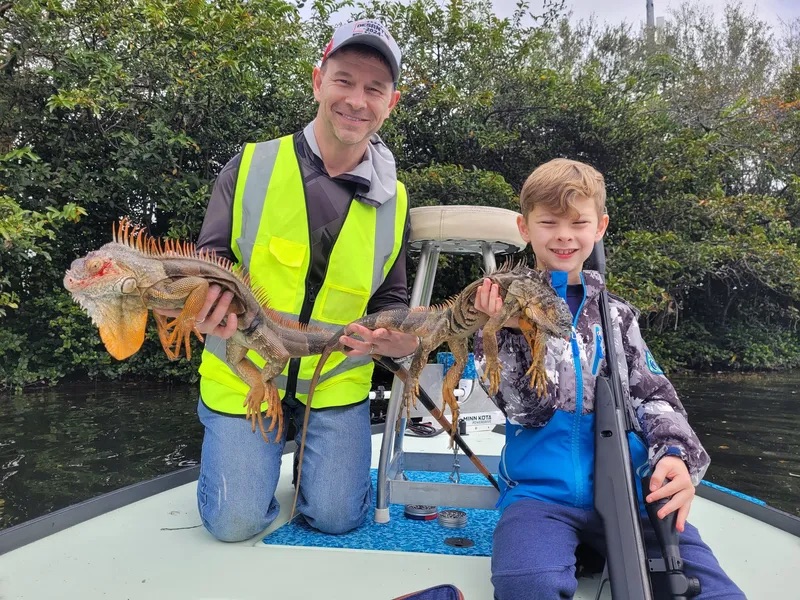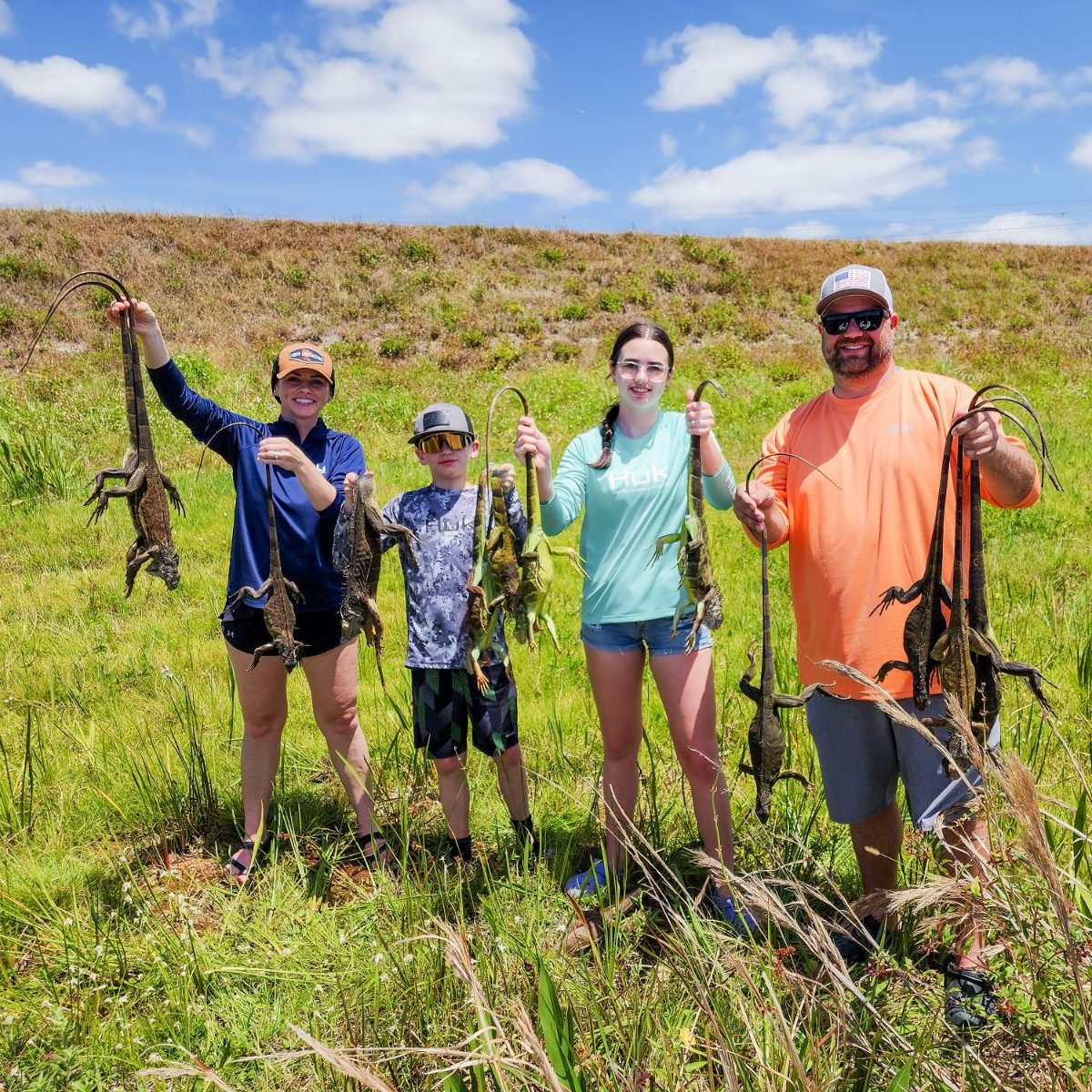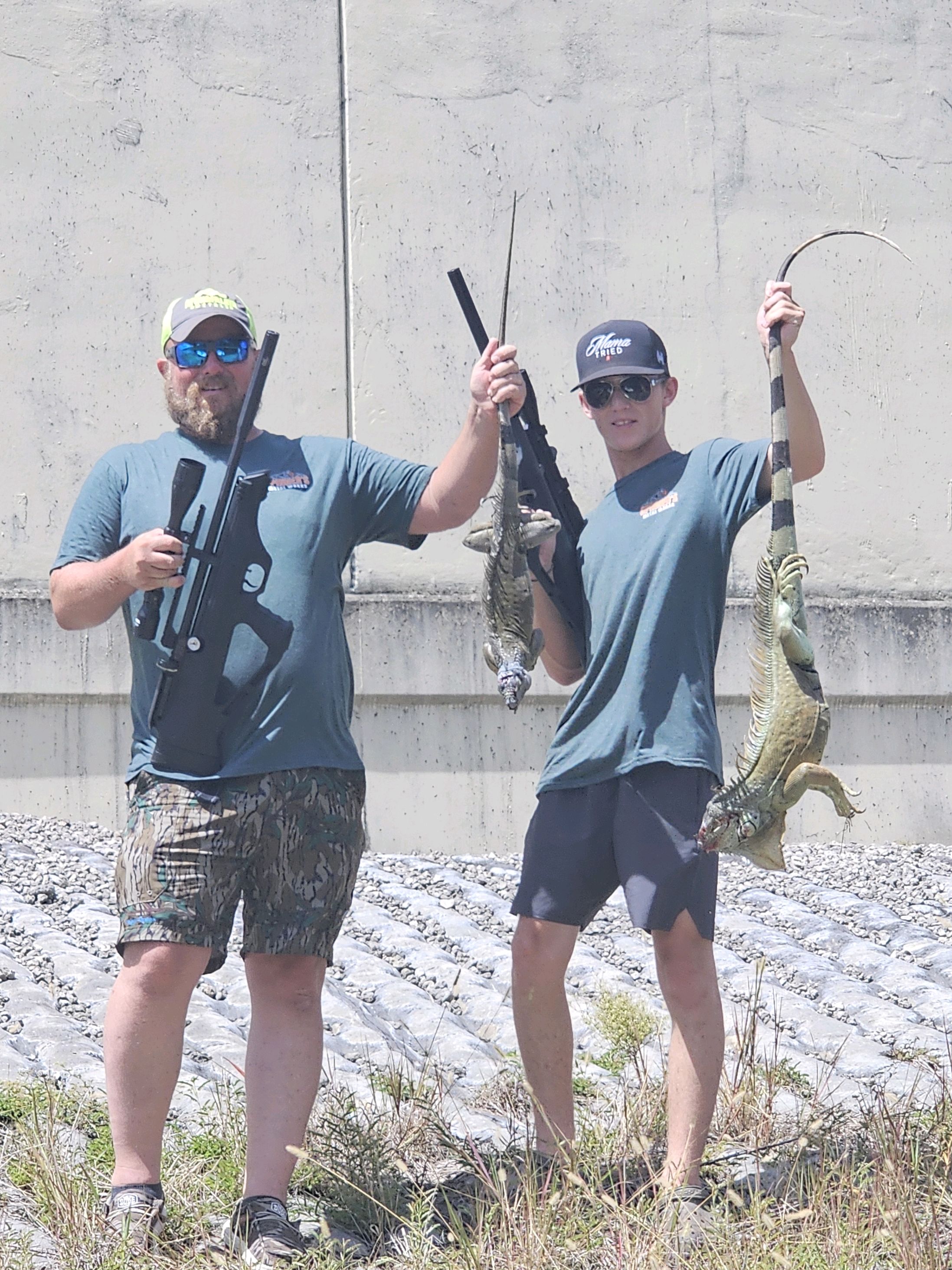Damn Good Guides
Experts Available 24/7
100% Weather Guarantee
Recently Booked Invasive Species Hunting Guides In Miami, Fl
Invasive Species Hunting in Miami
Iguana Hunting Adventure
Peacock Bass + Iguana Cast & Blast
Peacock Bass + Iguana Charter
Iguana Hunt
Invasive Species Hunting in Fort Lauderdale
Multi Boat Iguana Hunt
Cast & Blast in Fort Lauderdale
Cast And Blast Combo!
“Our Damn Good Guides go above and beyond, and we’ve handpicked every single one. We’re passionate about the outdoors and look forward to getting you out on the trip of a lifetime, every time.”
Jonathan and Attison | Co-founders | Austin, Texas
All Target Species in Miami
- Get it while it's HOT!
- This species is in play.
- You might get lucky (as long as things are in-season).
- Couldn't tell ya! (no data)
More Invasive Species Hunting Guides In Miami, Fl
Invasive Species Hunting in Sunrise
Epic Iguana Hunts
Peacock Bass & Iguana Cast & Blast
Invasive Species Hunting in Fort Lauderdale
Iguana Hunting Insanity FL
Cast & Blast in Fort Lauderdale
Cast And Blast Adventures
Invasive Species Hunting in Fort Lauderdale
Elite Guided Air Rifle Iguana Hunts
Miami Hook & Boom Trip
Need a Place to Stay?
Everything to Know About Booking a hunting trip in Miami
What are the best invasive species hunting trips in Miami?
The best invasive species hunting trips in Miami are:
What is invasive species hunting in Miami all about?
Invasive species hunting in Miami, Florida, is a crucial endeavor aimed at managing and controlling non-native species that threaten the region's delicate ecosystems. One of the primary targets for hunters in Miami is the Burmese python, a large constrictor snake that has become established in the nearby Everglades and surrounding areas. These pythons prey on a variety of native wildlife, posing significant ecological risks. Hunting efforts typically focus on cooler months when pythons are more active during daylight hours, utilizing specialized techniques such as thermal imaging devices and trained dogs to locate and capture them in their preferred habitats, such as wetlands and marshes. Removing pythons helps mitigate their impact on local biodiversity and protect native species from predation.
Green iguanas are another invasive species prominently targeted in Miami. Originally from Central and South America, these adaptable reptiles have thrived in Florida's subtropical climate and urban environments, where they feed on vegetation and compete with native wildlife. Hunters employ methods like air rifles and traps to capture green iguanas, especially during times when they are most active, such as sunny days when they bask in exposed areas or forage for food. Managing the green iguana population is crucial for preserving local flora and reducing damage to landscaping and infrastructure caused by their feeding habits.
In the marine environment, invasive species hunting includes efforts to control populations of lionfish. These predatory fish, native to the Indo-Pacific, have invaded the waters of the Gulf of Mexico and pose significant threats to native marine life and coral reefs. Divers play a vital role in spearfishing lionfish around reefs, wrecks, and rocky outcrops where they congregate. Organized hunts and tournaments encourage community involvement in lionfish removal, raising awareness about their impact and promoting conservation efforts. Targeting these invasive species through effective hunting strategies is essential for protecting Miami's natural habitats and maintaining the health of local ecosystems.
What are the most popular months to go invasive species hunting in Miami?
In Miami, Florida, invasive species hunting seasons are strategically planned to maximize effectiveness in managing non-native species that threaten the region's ecosystems. One of the primary targets during these seasons is the Burmese python, a large constrictor snake that has established breeding populations in nearby natural areas like the Everglades. Hunting for pythons typically occurs during the cooler months, from late fall through early spring, when these reptiles are more active and easier to detect. Hunters use specialized techniques such as nighttime searches with thermal imaging devices and trained dogs to locate pythons in their habitats, such as wetlands and marshy areas. Removing pythons during these seasons helps mitigate their impact on native wildlife by curbing predation and competition for resources.
Green iguanas are also a significant focus of invasive species hunting efforts in Miami, with hunting seasons often spanning throughout the year. These reptiles, native to Central and South America, have adapted well to Florida's subtropical climate and urban environments, where they feed on vegetation and compete with native wildlife. Hunters employ methods such as air rifles and traps to capture green iguanas, targeting them during periods when they are most active basking in the sun or foraging for food. Managing the green iguana population is essential for protecting local flora and minimizing damage to landscaping and infrastructure.
In the marine environment, invasive species hunting includes efforts to control populations of lionfish. These predatory fish, originally from the Indo-Pacific, have invaded the waters of the Gulf of Mexico and pose significant threats to native fish species and coral reefs. Spearfishing for lionfish is often conducted year-round, with heightened efforts during warmer months when lionfish are more active around reefs, wrecks, and rocky outcrops. Divers participate in organized hunts and tournaments to remove lionfish from marine ecosystems, promoting community involvement and conservation awareness. Coordinating hunting efforts with the seasonal behaviors of invasive species ensures more effective management and conservation of Miami's natural habitats and marine biodiversity.
What techniques are popular for invasive species hunting in Miami?
Invasive species hunting in Miami, Florida, employs diverse methods and techniques tailored to effectively manage and reduce populations of non-native species that threaten local ecosystems. One prominent target is the Burmese python, which has established itself in areas like the Everglades. Hunters utilize specialized tools such as thermal imaging devices and trained dogs to locate pythons in their habitats, including wetlands and marshes. These methods are particularly effective during cooler months when pythons are more active, allowing hunters to detect and capture them more efficiently. Once located, pythons are safely handled to minimize harm, supporting efforts to protect native wildlife from their predatory impact.
Green iguanas are another major focus of invasive species hunting efforts in Miami due to their proliferation and impact on local vegetation. Hunters employ various techniques, such as air rifles and traps, to capture green iguanas, particularly in urban areas where they are abundant. Strategic hunting during periods when iguanas are most active, such as sunny days when they bask in open areas, enhances the effectiveness of these efforts. Managing the green iguana population helps mitigate damage to landscaping and reduces competition with native wildlife, thereby preserving the local ecosystem's balance.
In the marine environment, invasive species hunting includes targeted efforts to control lionfish populations. These predatory fish, originally from the Indo-Pacific, have invaded the Gulf of Mexico and pose significant threats to native marine life and coral reefs. Divers engage in spearfishing activities around reefs, wrecks, and rocky outcrops where lionfish congregate. This method allows for precise targeting and removal of lionfish, helping to restore ecological balance and protect native fish populations. Organized events and community initiatives promote lionfish removal efforts, fostering public awareness and participation in marine conservation in Miami. Employing a variety of hunting techniques ensures a comprehensive approach to managing invasive species and safeguarding Miami's diverse ecosystems.
What species are popular for invasive species hunting in Miami?
Invasive species hunting in Miami, Florida, targets several key species that have established themselves as threats to the region's biodiversity and ecosystem health. One primary focus is on the Burmese python, a large constrictor snake that has flourished in nearby natural habitats like the Everglades. These pythons prey on a range of native wildlife, disrupting local ecosystems. Hunters use specialized techniques such as thermal imaging devices and trained dogs to locate pythons in their preferred habitats, such as wetlands and marshes. The cooler months, when pythons are more active during daylight hours, are ideal for hunting these elusive snakes to enhance detection and removal efforts.
Green iguanas are another significant target for invasive species hunters in Miami. These reptiles, originally from Central and South America, have adapted well to the area's subtropical climate and urban environments. They feed on vegetation and compete with native wildlife for resources. Hunters employ methods such as air rifles and traps to capture green iguanas, especially during periods when they are most active, such as sunny days when they bask in exposed areas or forage for food. Managing the green iguana population is crucial for protecting local flora and minimizing damage to landscaping and infrastructure caused by their feeding habits.
In the marine environment, invasive species hunting includes efforts to control lionfish populations. These predatory fish, originally from the Indo-Pacific, have invaded the Gulf of Mexico and pose significant threats to native fish species and coral reefs. Divers play a critical role in spearfishing lionfish around reefs, wrecks, and rocky outcrops where they congregate. This method allows for targeted removal of lionfish, which helps restore balance to marine ecosystems and protect native marine life. Organized hunts and community-driven initiatives promote lionfish removal efforts, raising awareness and encouraging conservation practices among residents and visitors in Miami.
Recent Reviews
Other Featured Cities
- Fishing Charters Near Me
- Austin Fishing Guides
- Biloxi Fishing Charters
- Bradenton Fishing Charters
- Cabo San Lucas Fishing Charters
- Cancun Fishing Charters
- Cape Coral Fishing Charters
- Charleston Fishing Charters
- Clearwater Fishing Charters
- Corpus Christi Fishing Charters
- Crystal River Fishing Charters
- Dauphin Island Fishing Charters
- Daytona Beach Fishing Charters
- Destin Fishing Charters
- Fort Lauderdale Fishing Charters
- Fort Myers Fishing Charters
- Fort Walton Beach Fishing Charters
- Galveston Fishing Charters
- Gulf Shores Fishing Charters
- Hatteras Fishing Charters
- Hilton Head Fishing Charters
- Islamorada Fishing Charters
- Jacksonville Fishing Charters
- Jupiter Fishing Charters
- Key Largo Fishing Charters
- Key West Fishing Charters
- Kona Fishing Charters
- Lakeside Marblehead Fishing Charters
- Marathon Fishing Charters
- Marco Island Fishing Charters
- Miami Fishing Charters
- Montauk Fishing Charters
- Morehead City Fishing Charters
- Naples Fishing Charters
- New Orleans Fishing Charters
- New Smyrna Beach Fishing Charters
- Ocean City Fishing Charters
- Orange Beach Fishing Charters
- Panama City Beach Fishing Charters
- Pensacola Fishing Charters
- Pompano Beach Fishing Charters
- Port Aransas Fishing Charters
- Port Orange Fishing Charters
- Rockport Fishing Charters
- San Diego Fishing Charters
- San Juan Fishing Charters
- Sarasota Fishing Charters
- South Padre Island Fishing Charters
- St. Augustine Fishing Charters
- St. Petersburg Fishing Charters
- Tampa Fishing Charters
- Tarpon Springs Fishing Charters
- Venice Fishing Charters
- Virginia Beach Fishing Charters
- West Palm Beach Fishing Charters
- Wilmington Fishing Charters
- Wrightsville Beach Fishing Charters
Didn't Find What You Were Looking For?
Our guides are Damn Good Guides, which means they’re vetted by our team of outdoor experts who know them on a first-name basis. We hand pick each and every one of them, and our network spans all across the US and beyond.
The proof is in the pudding, and we’re incredibly proud of our 4.9 / 5 average review score. Hit the button below to see more trip options:
